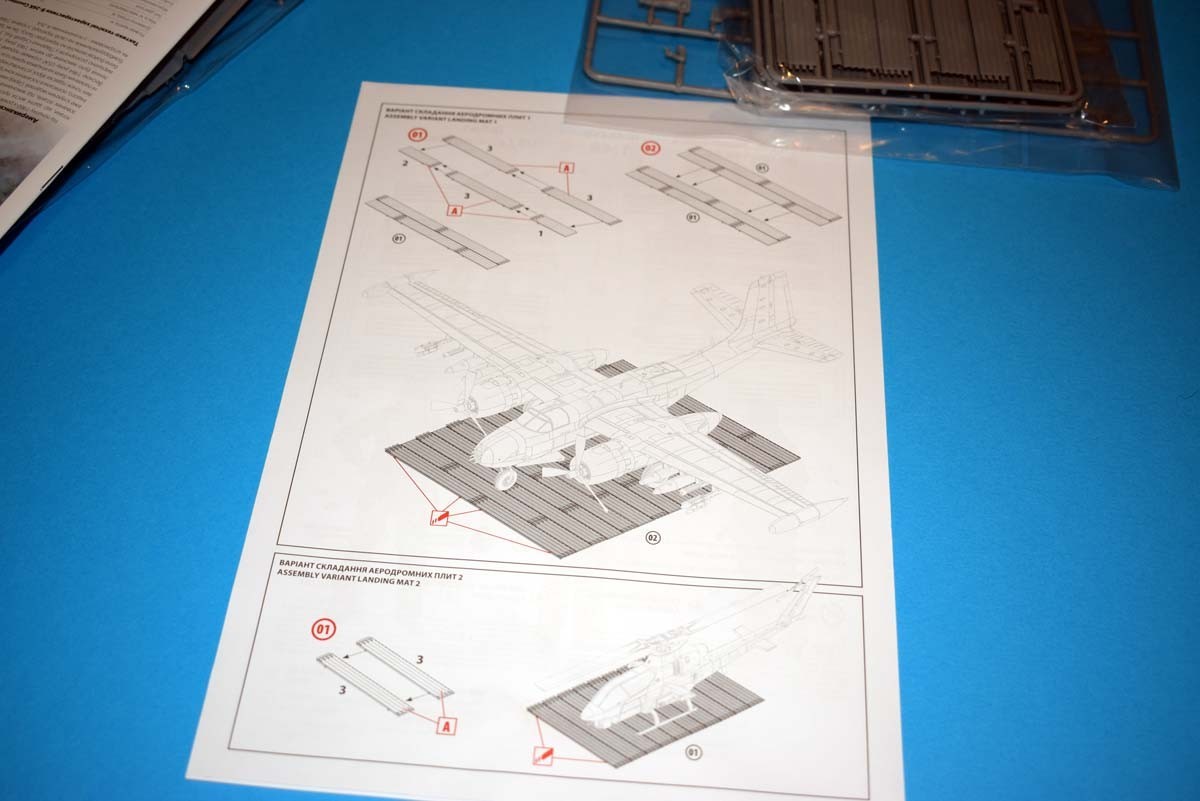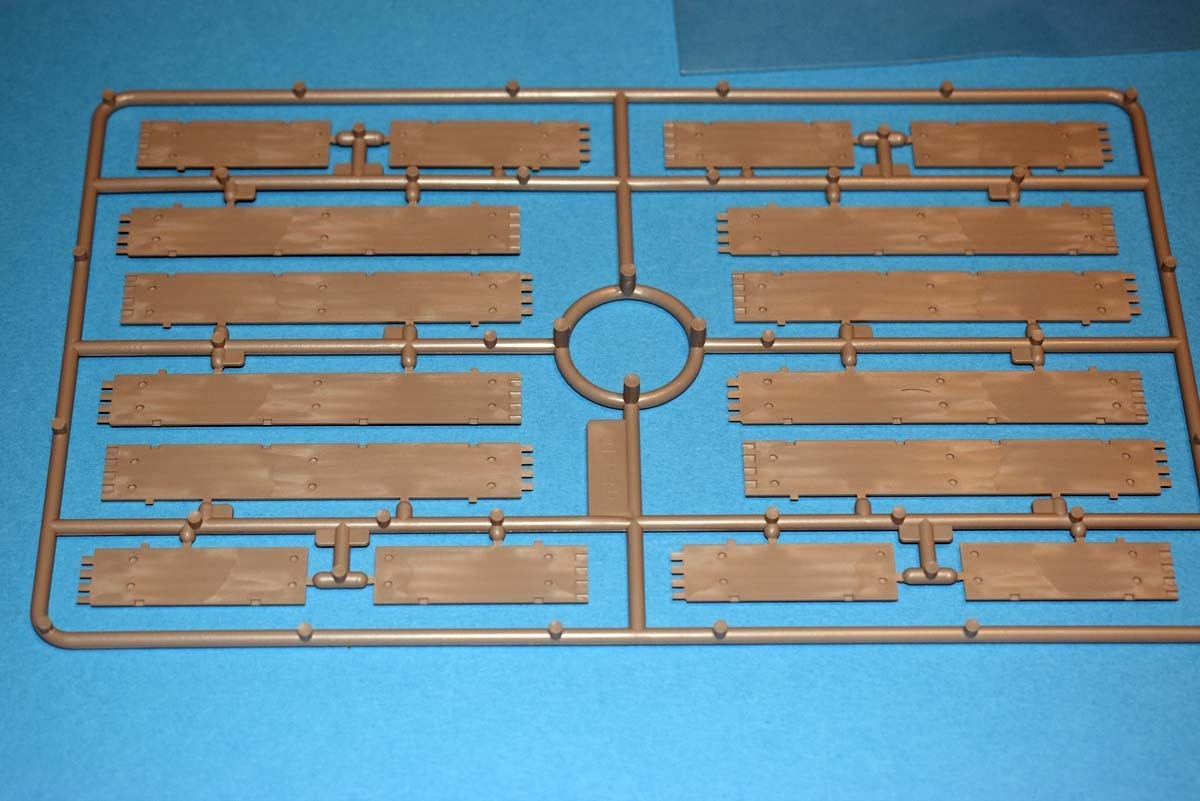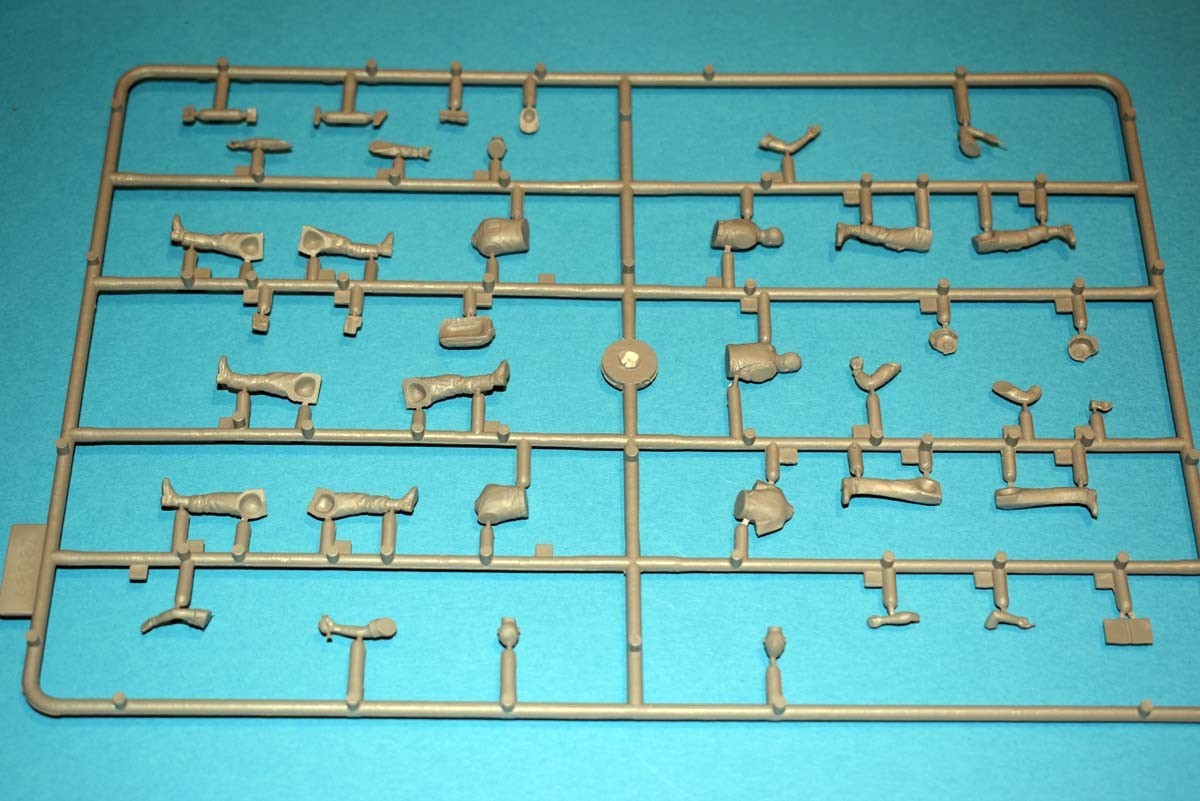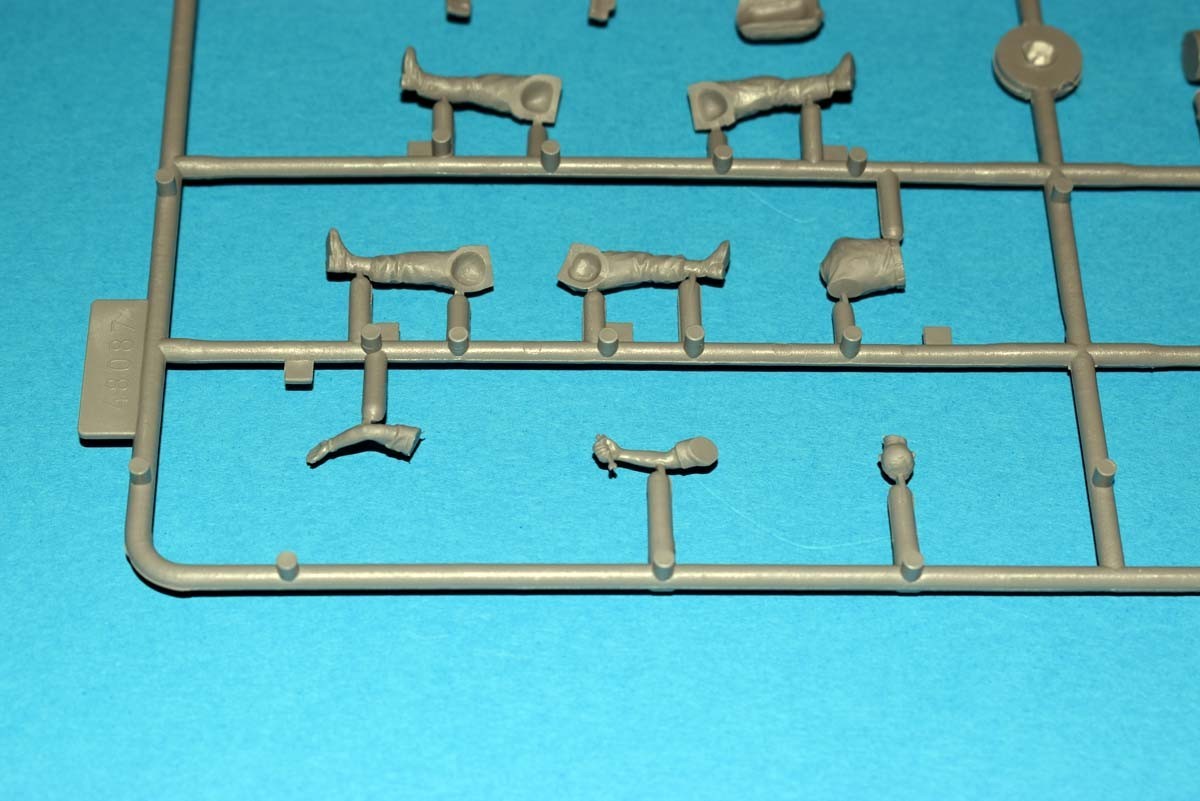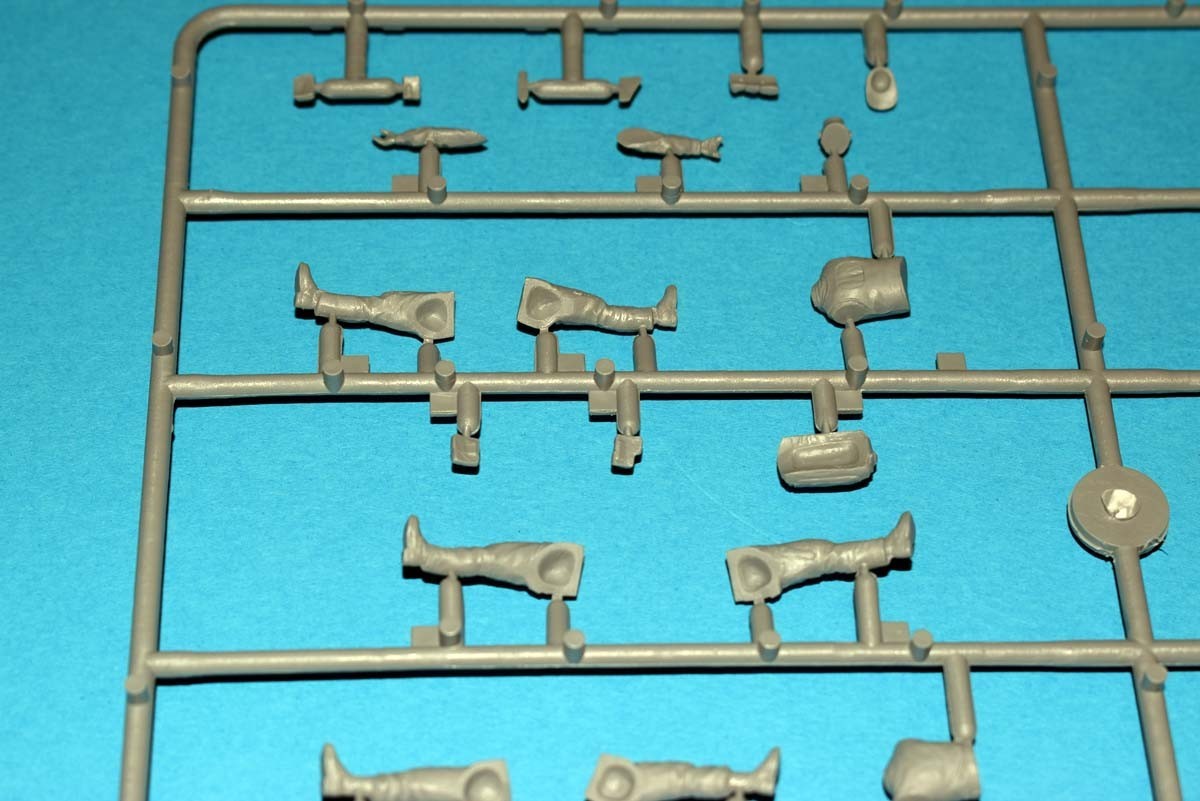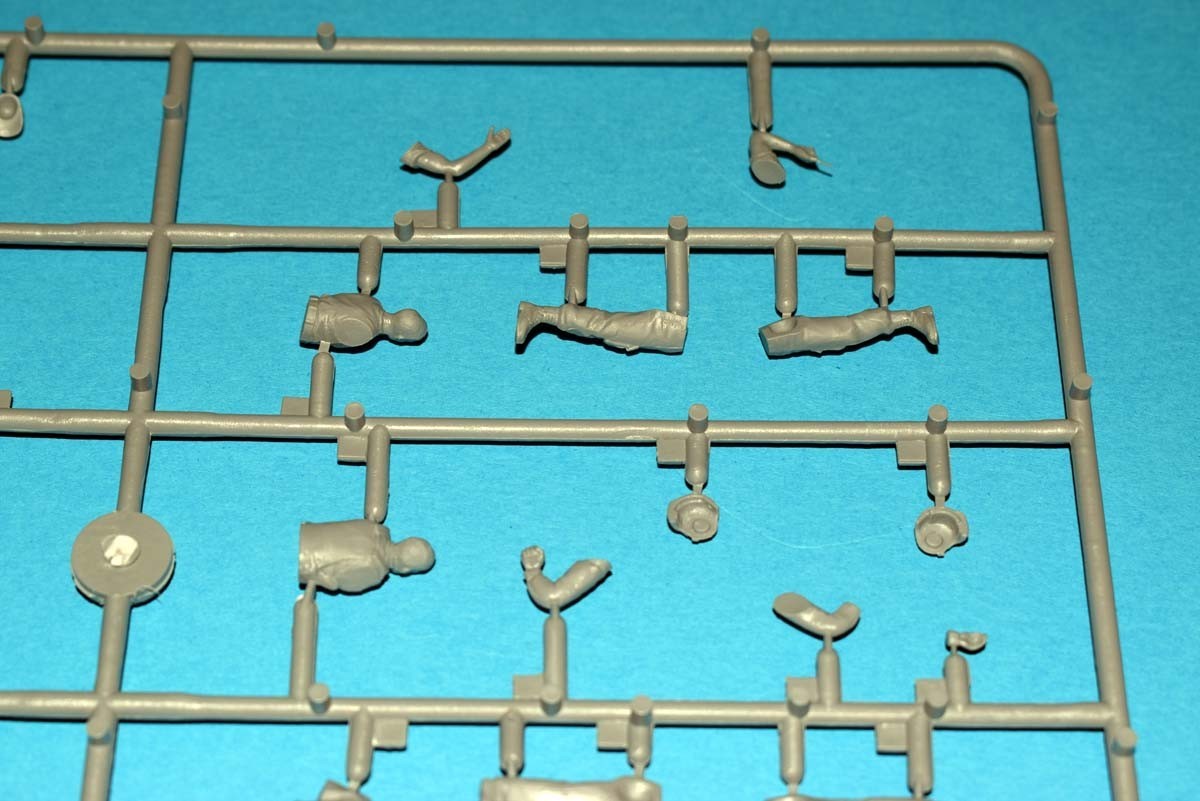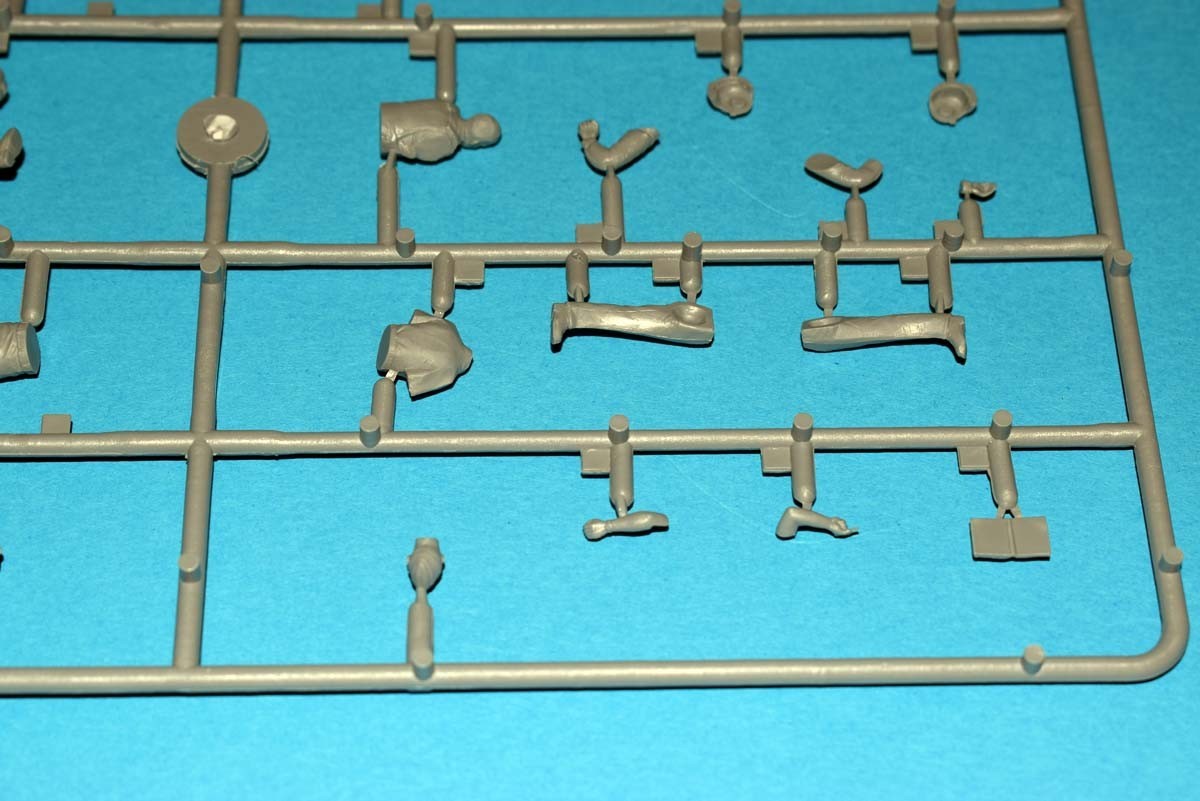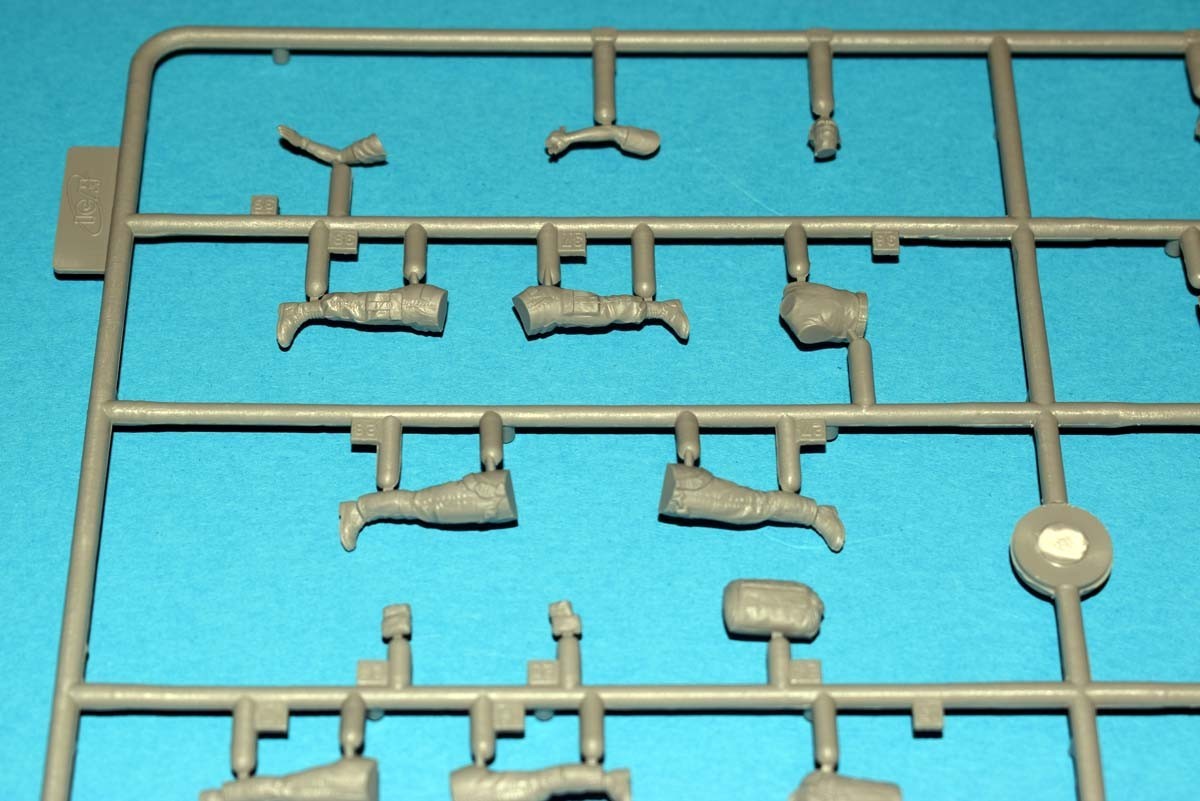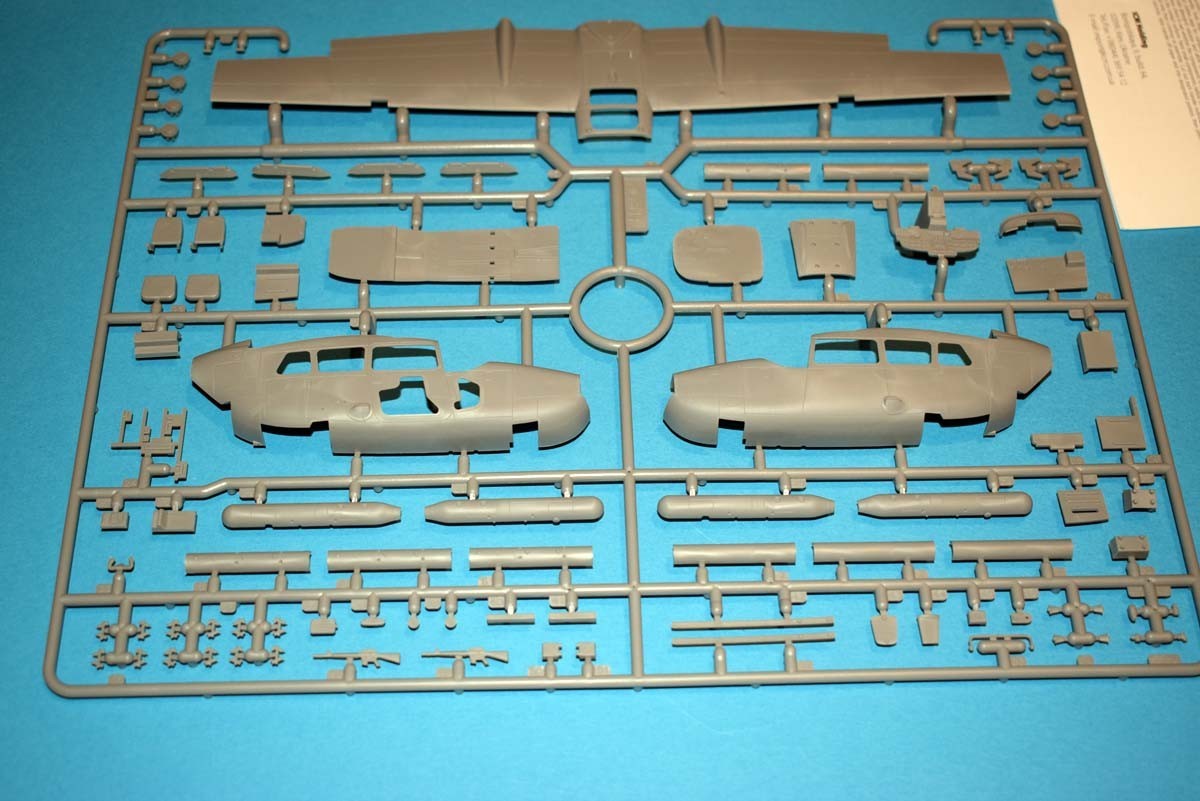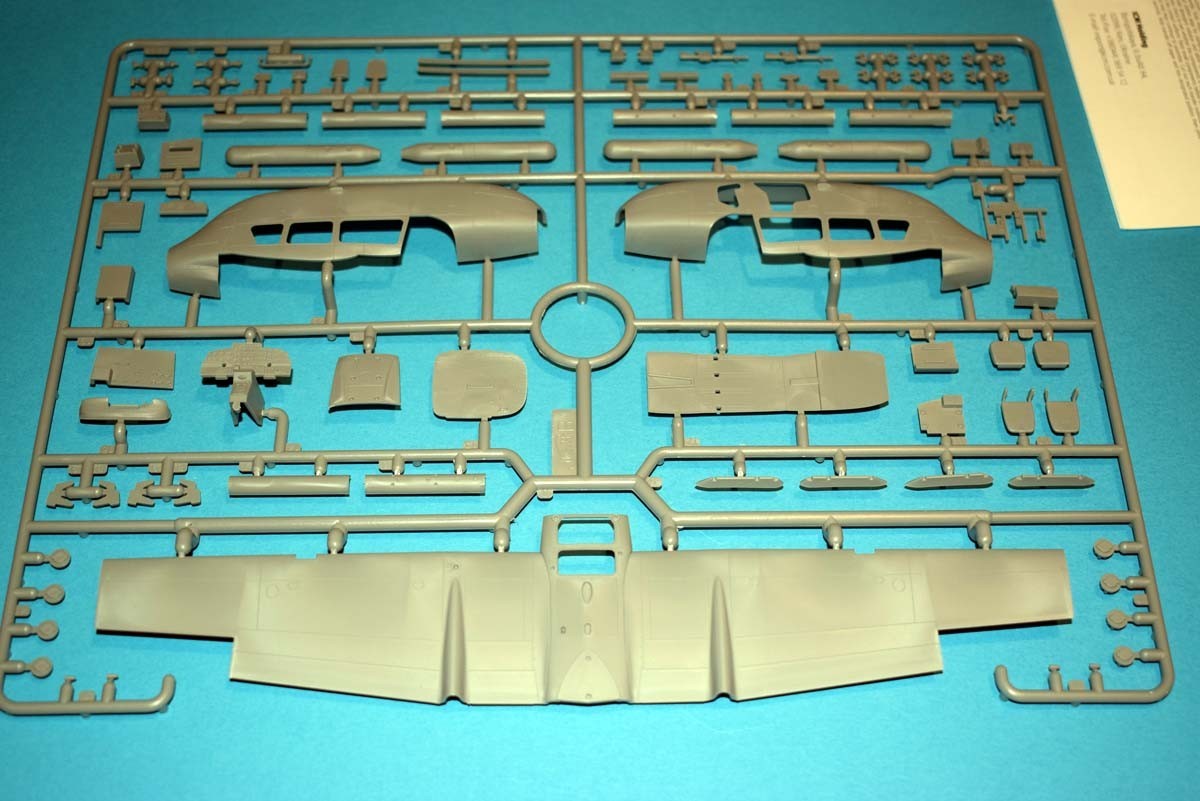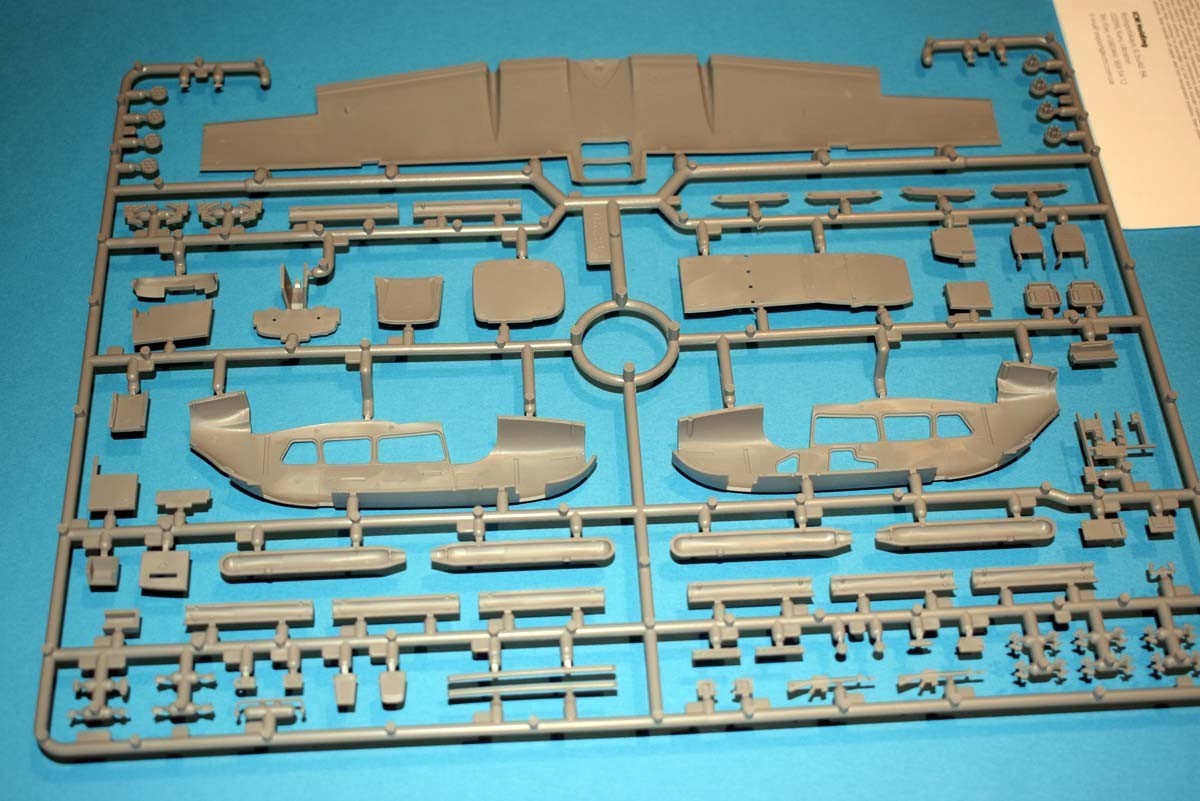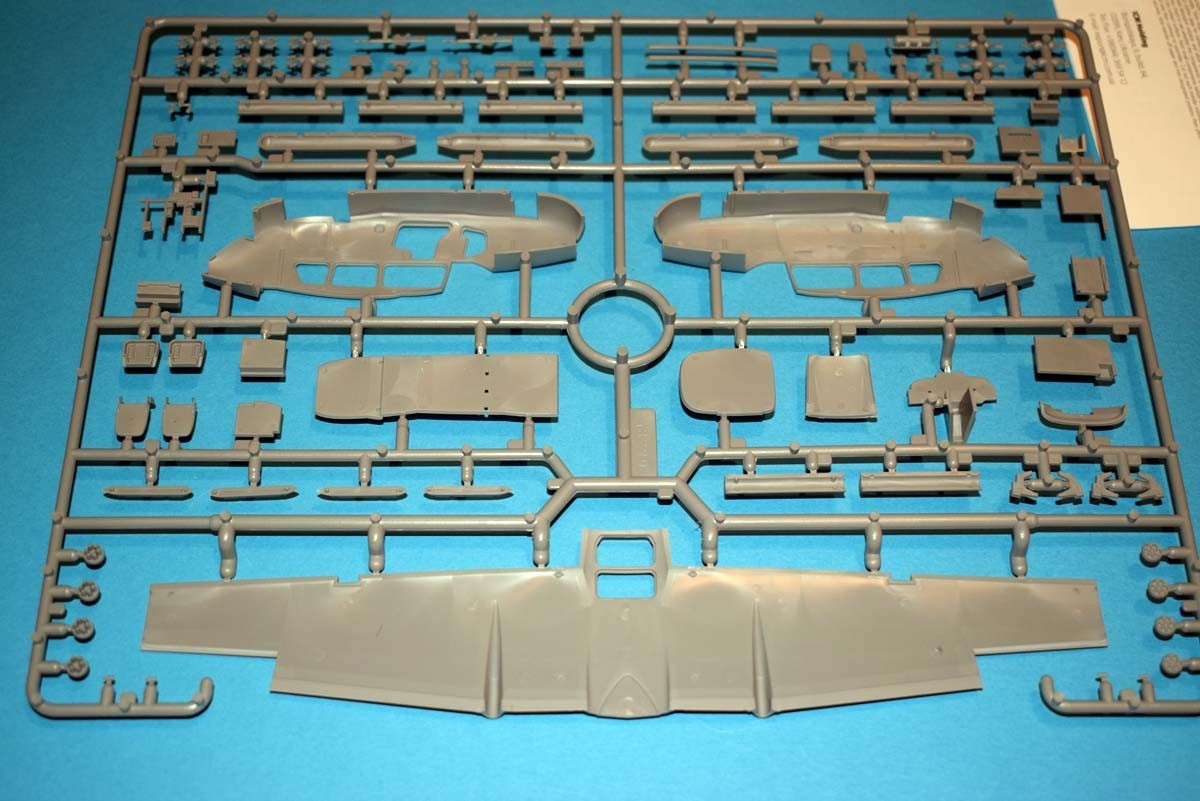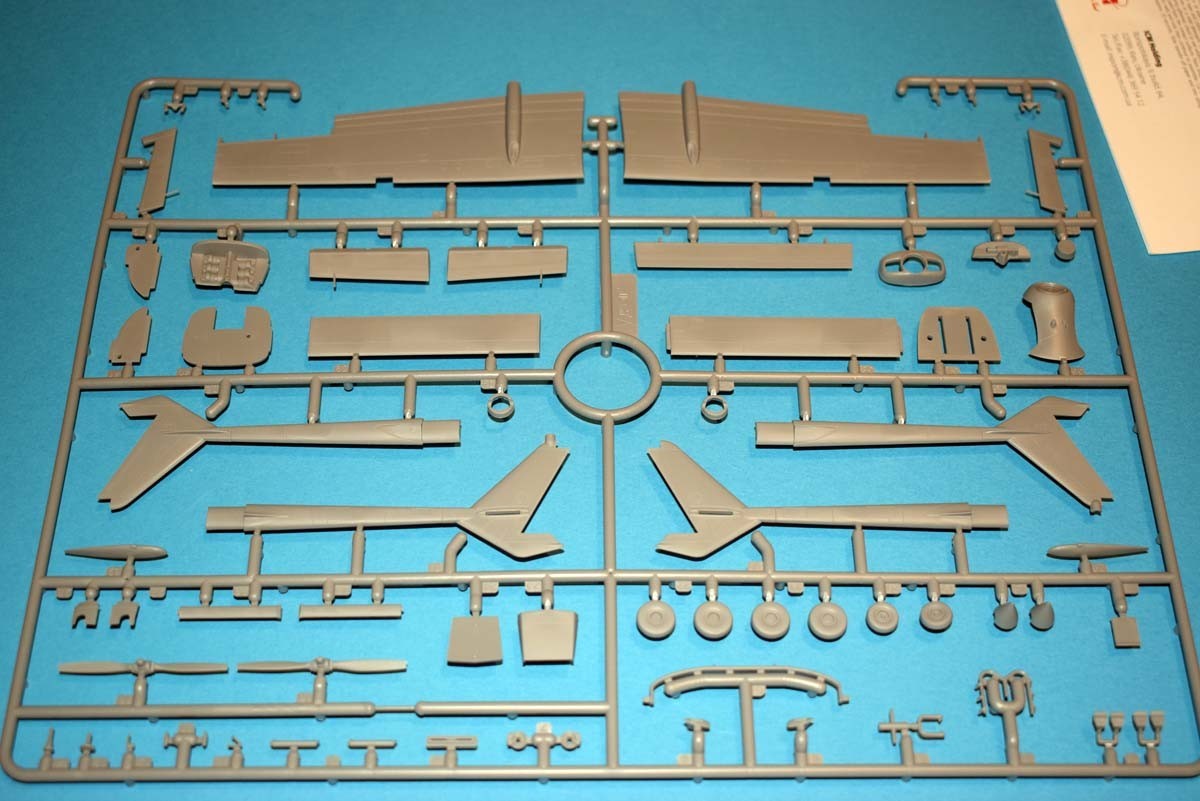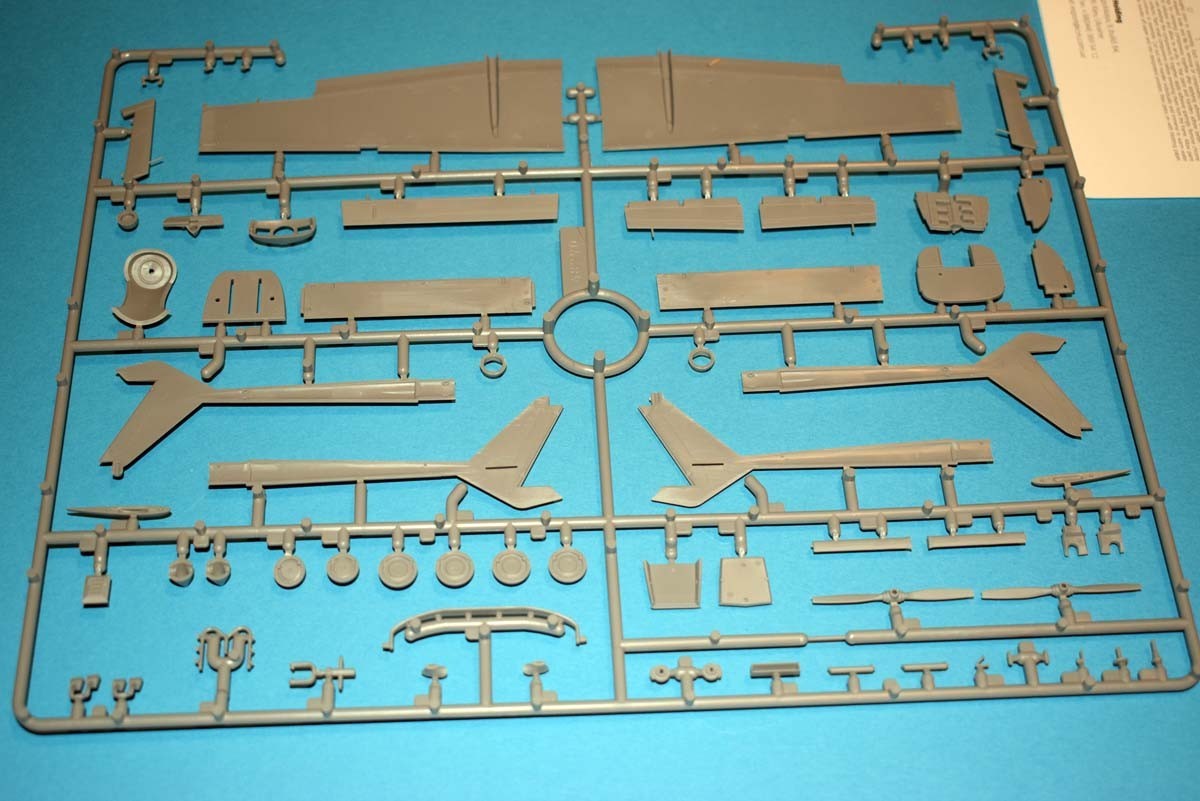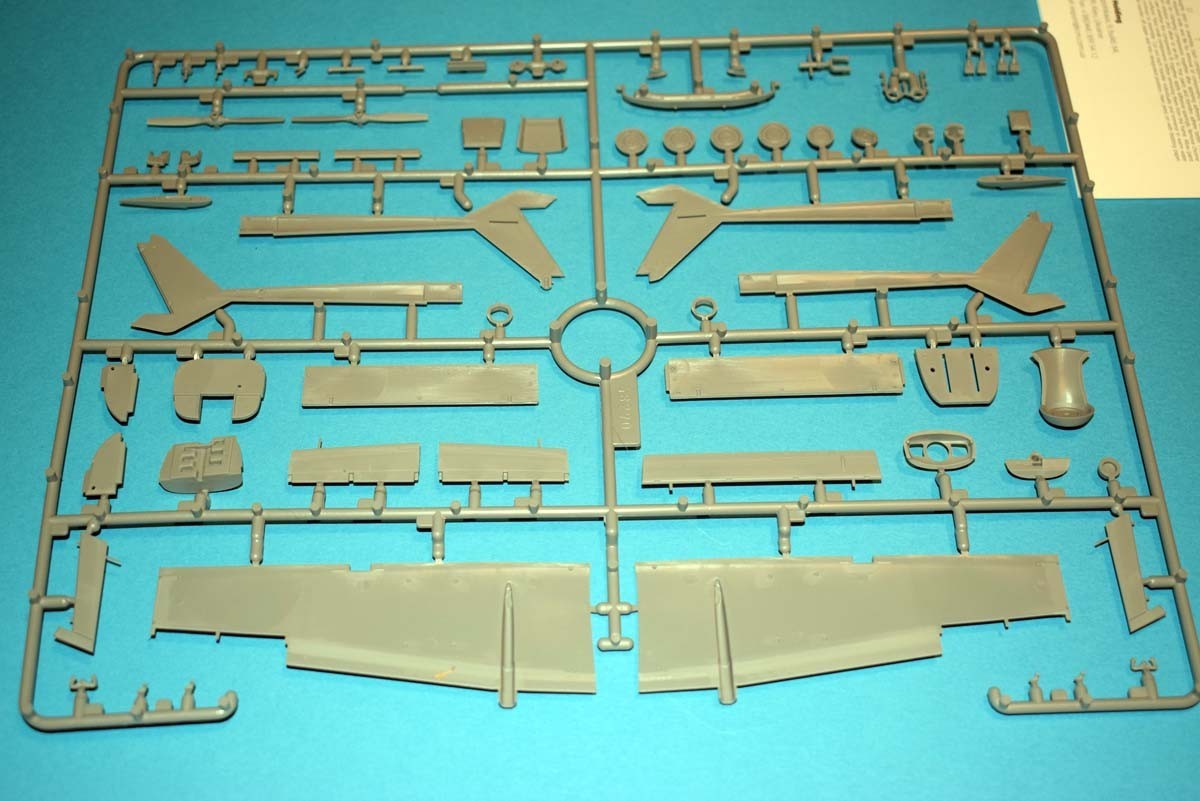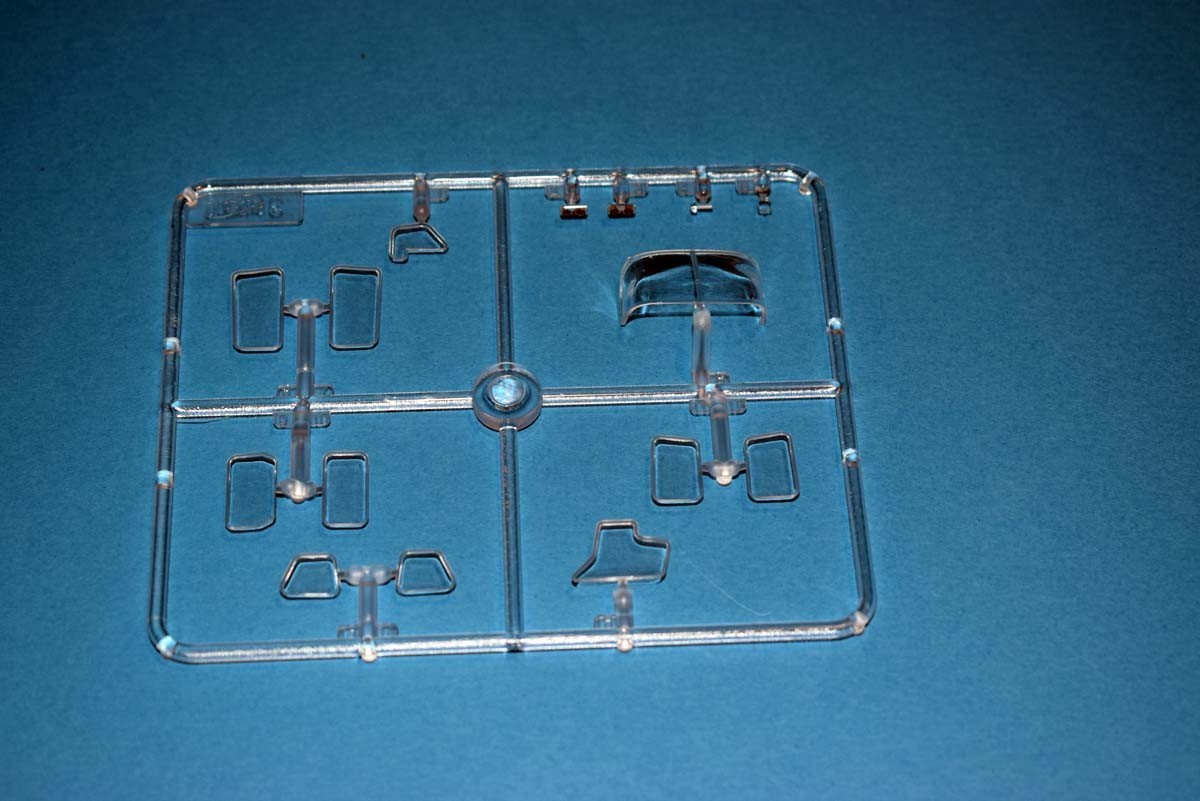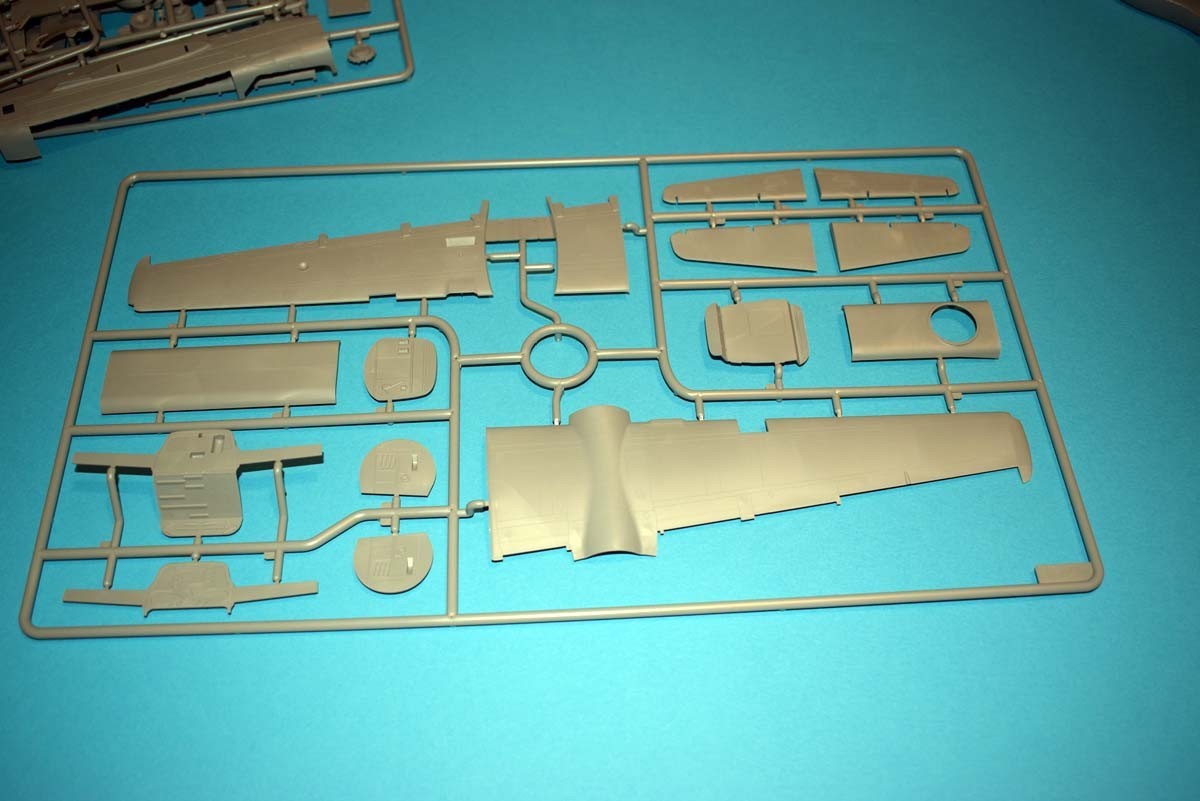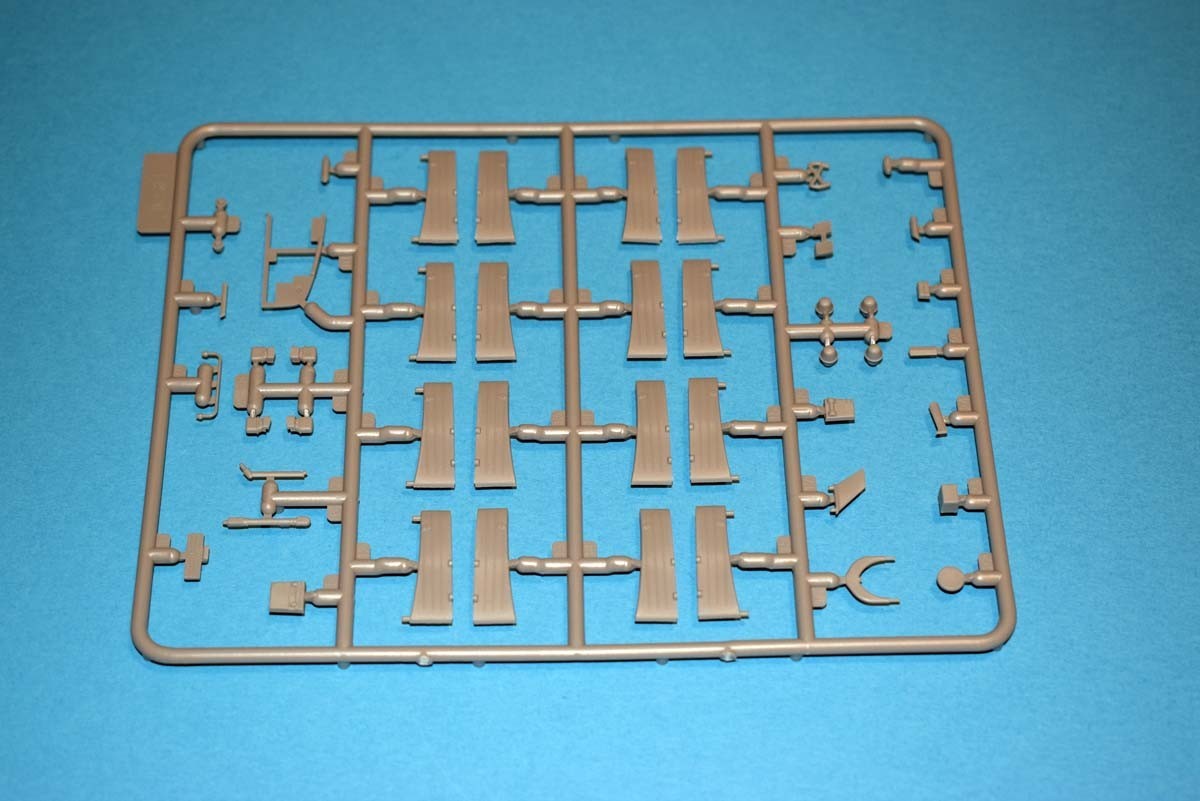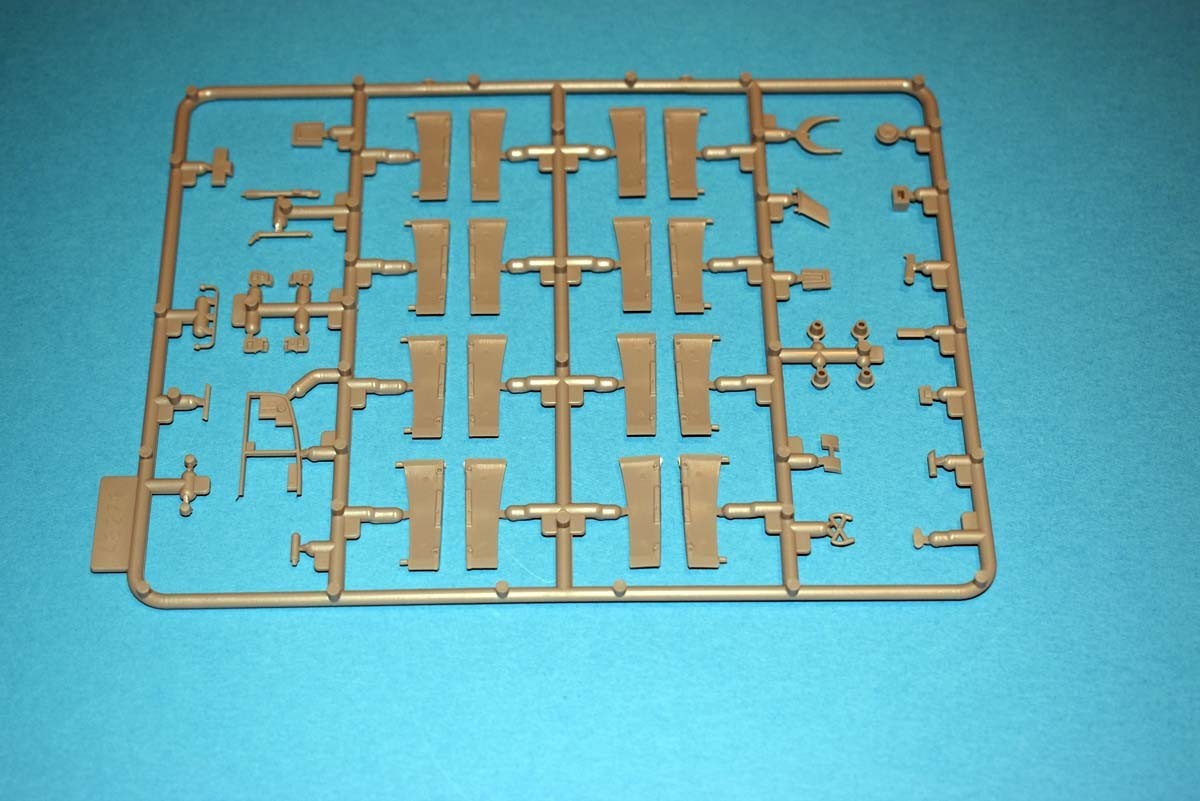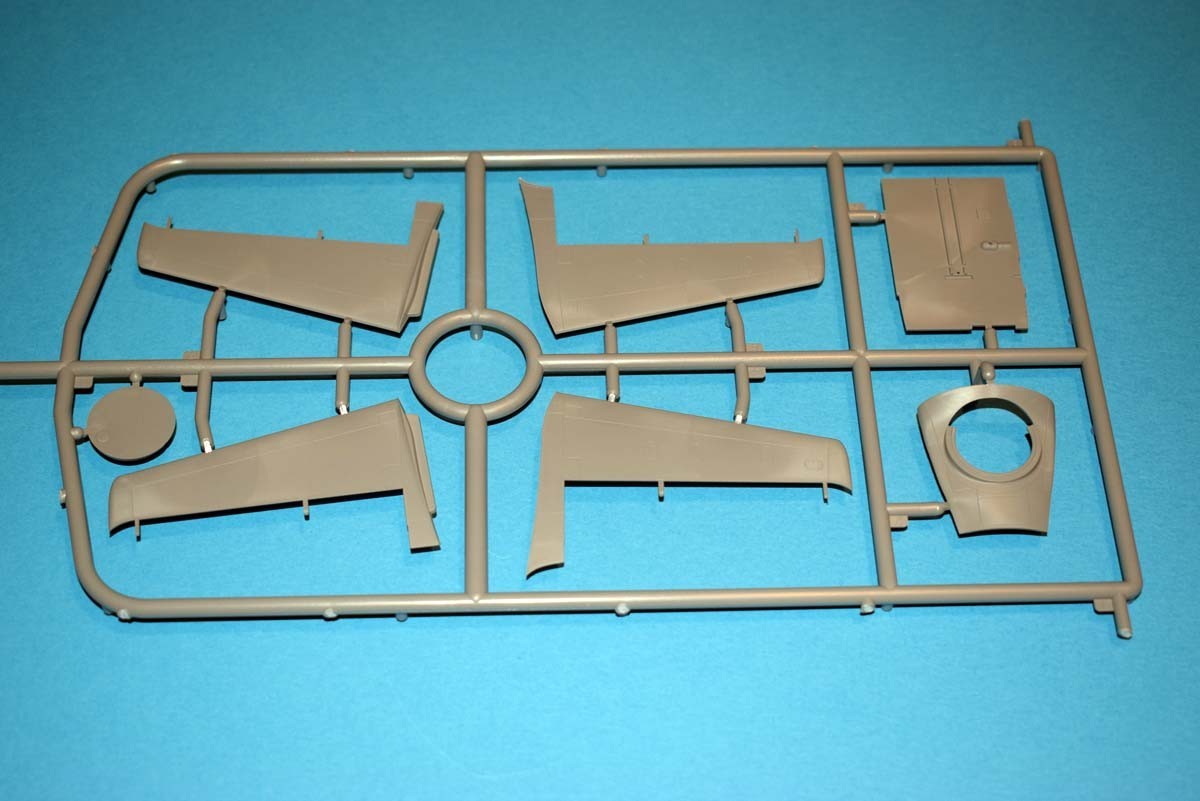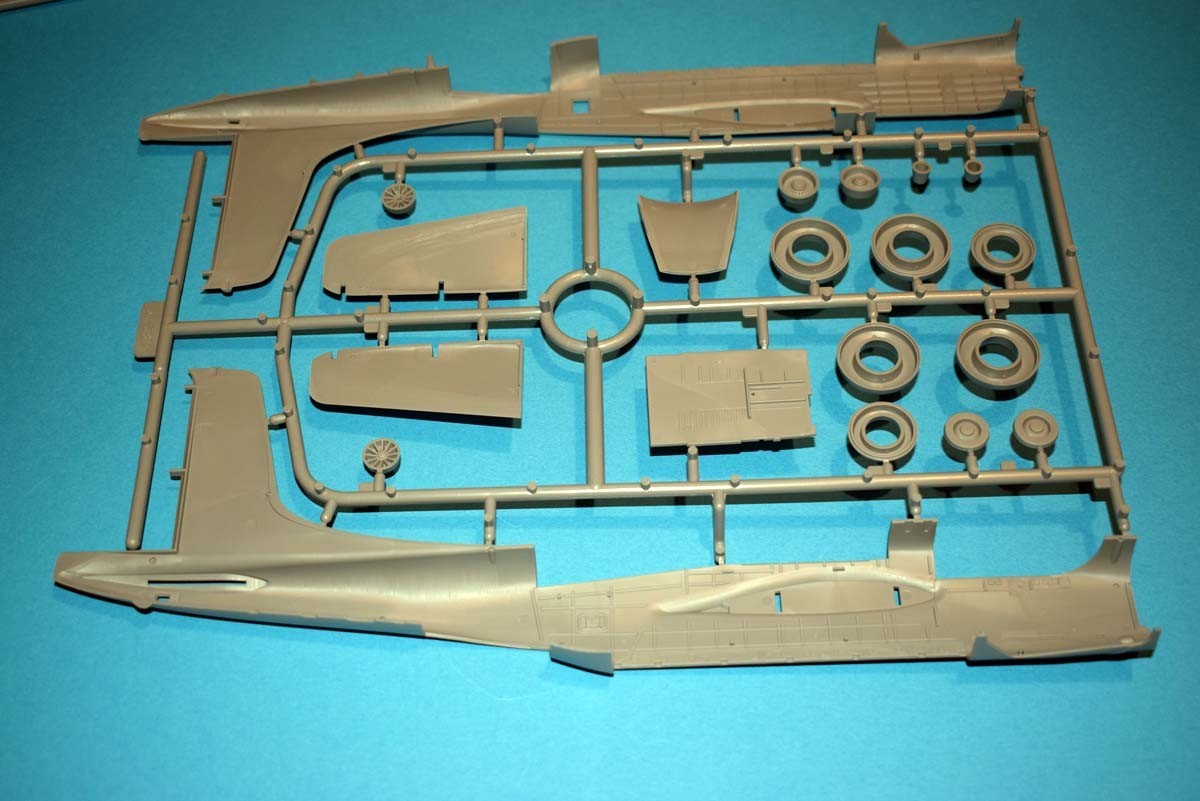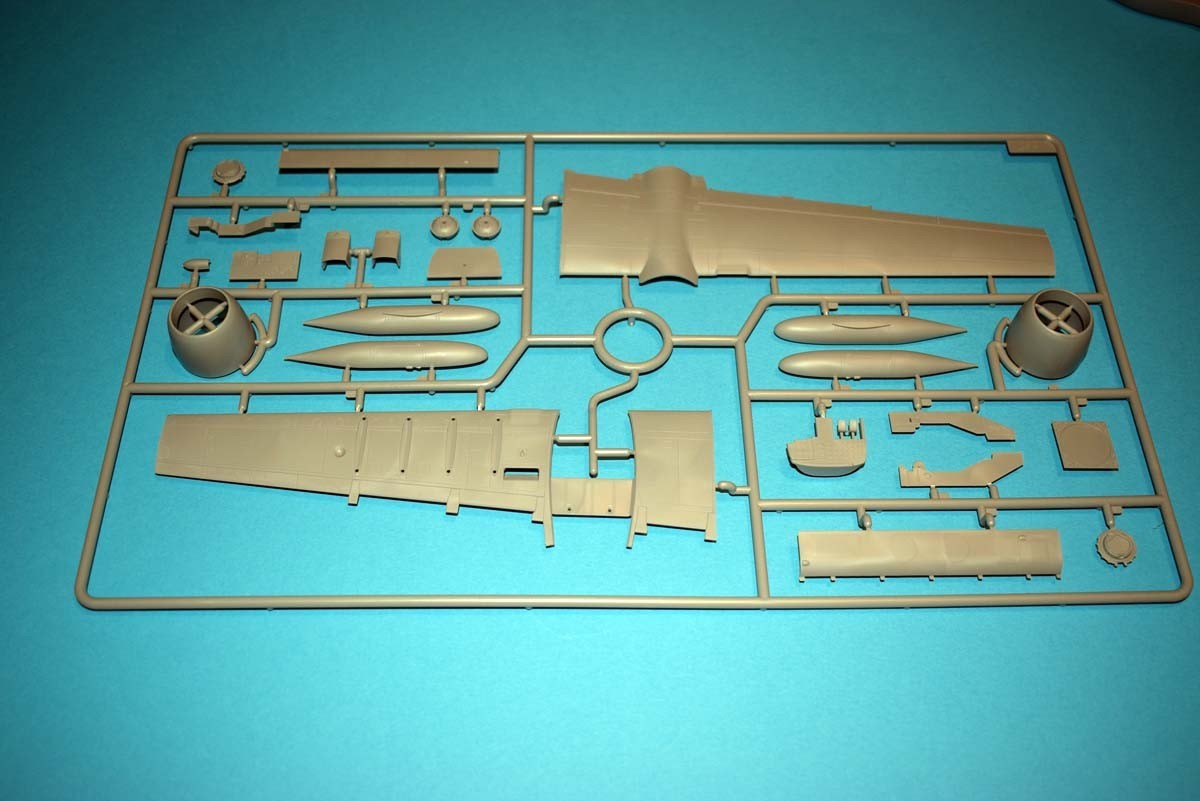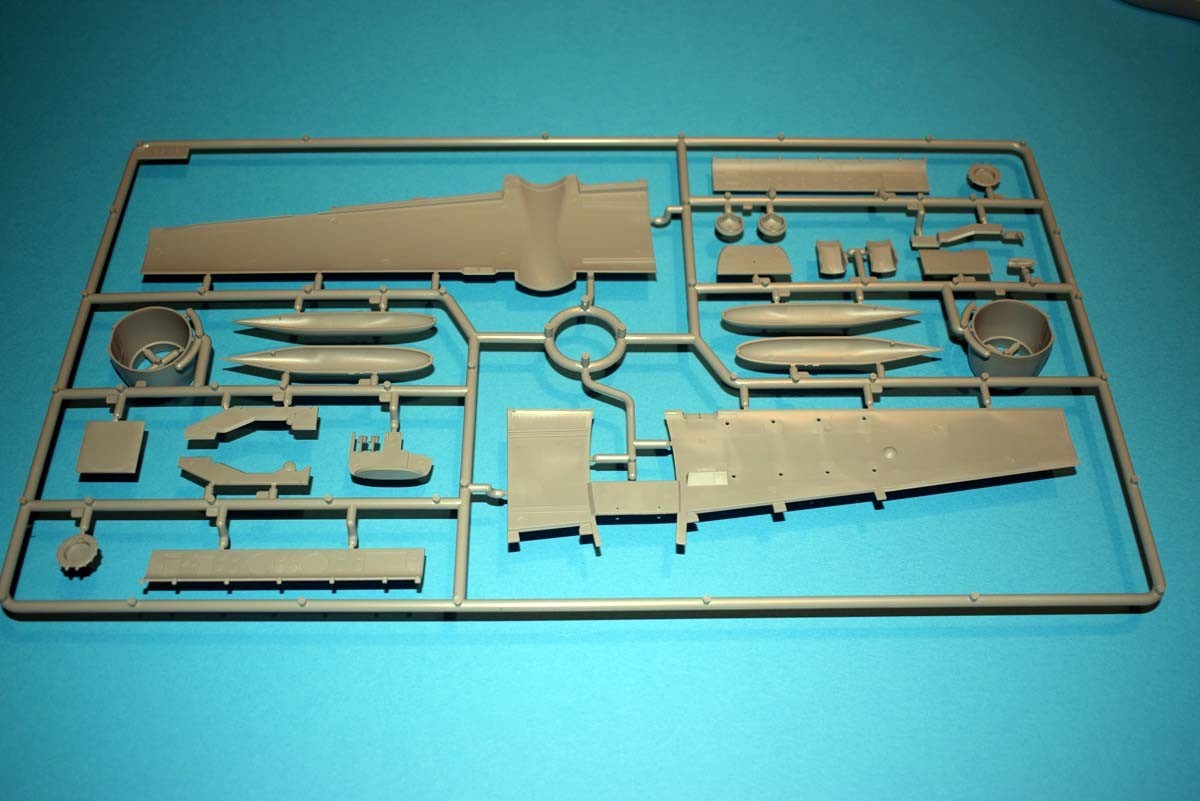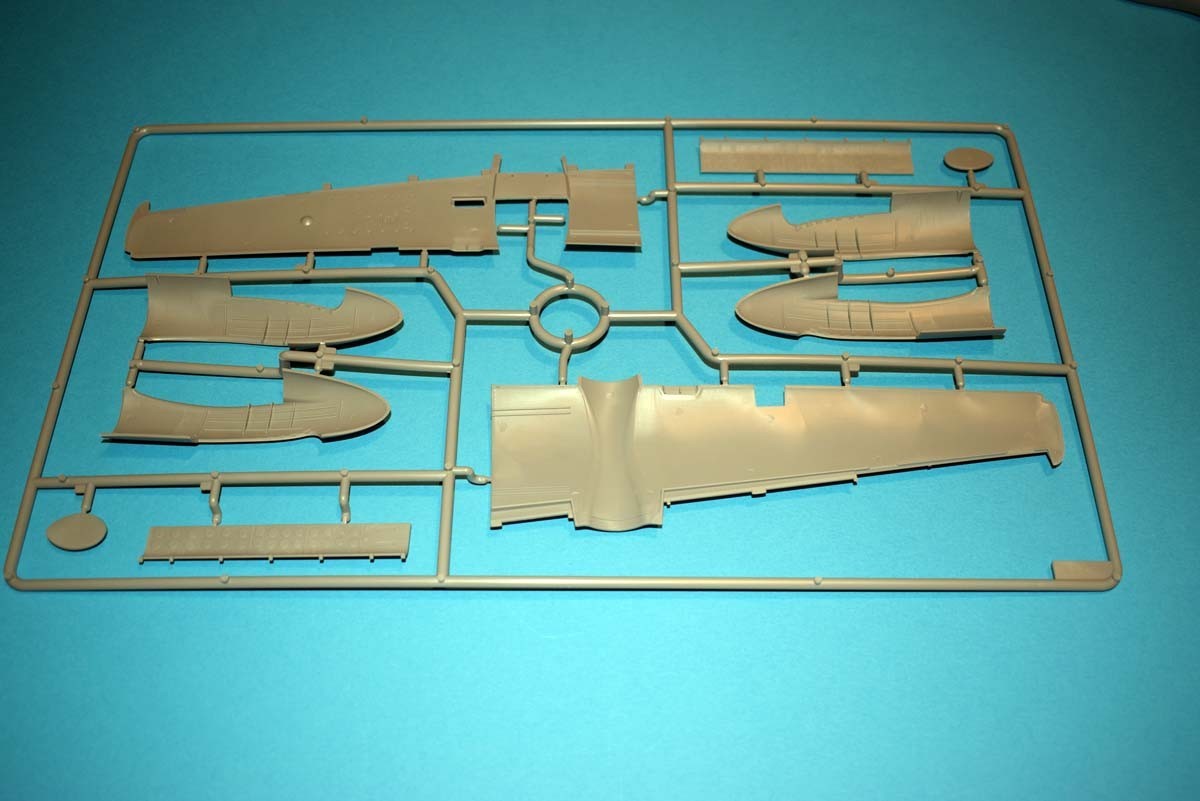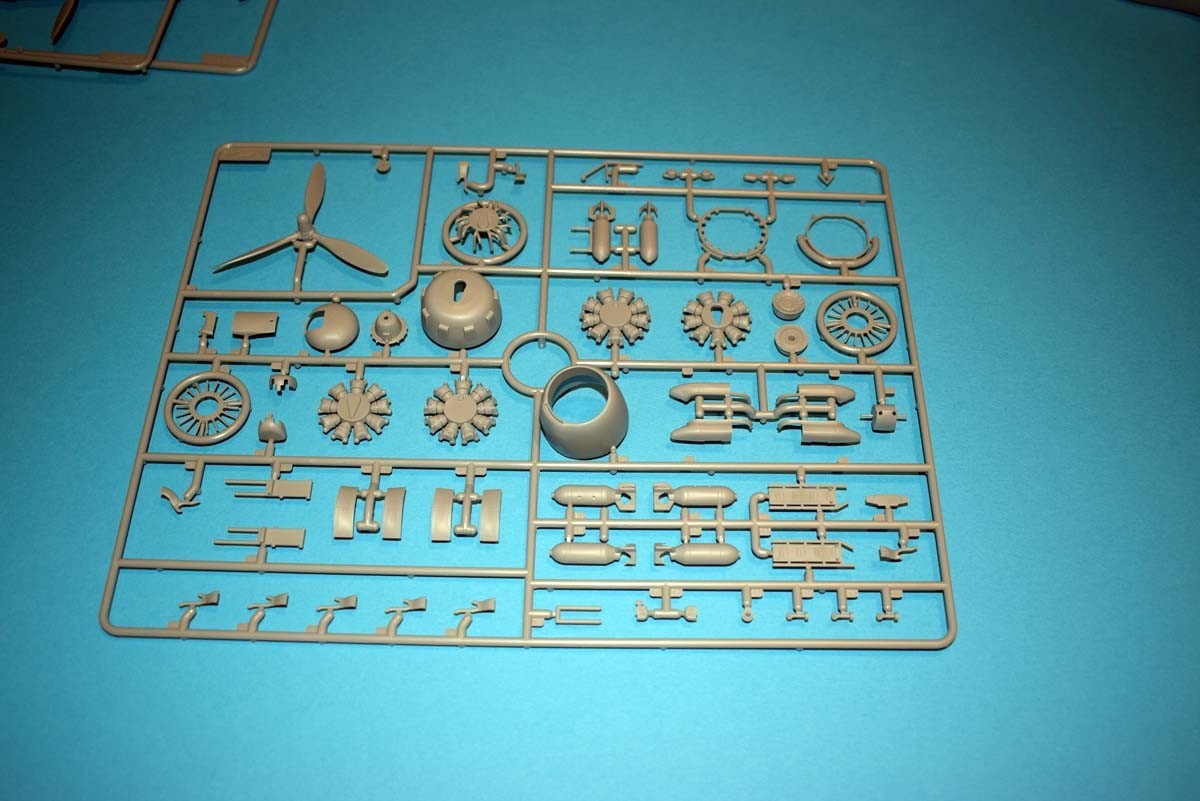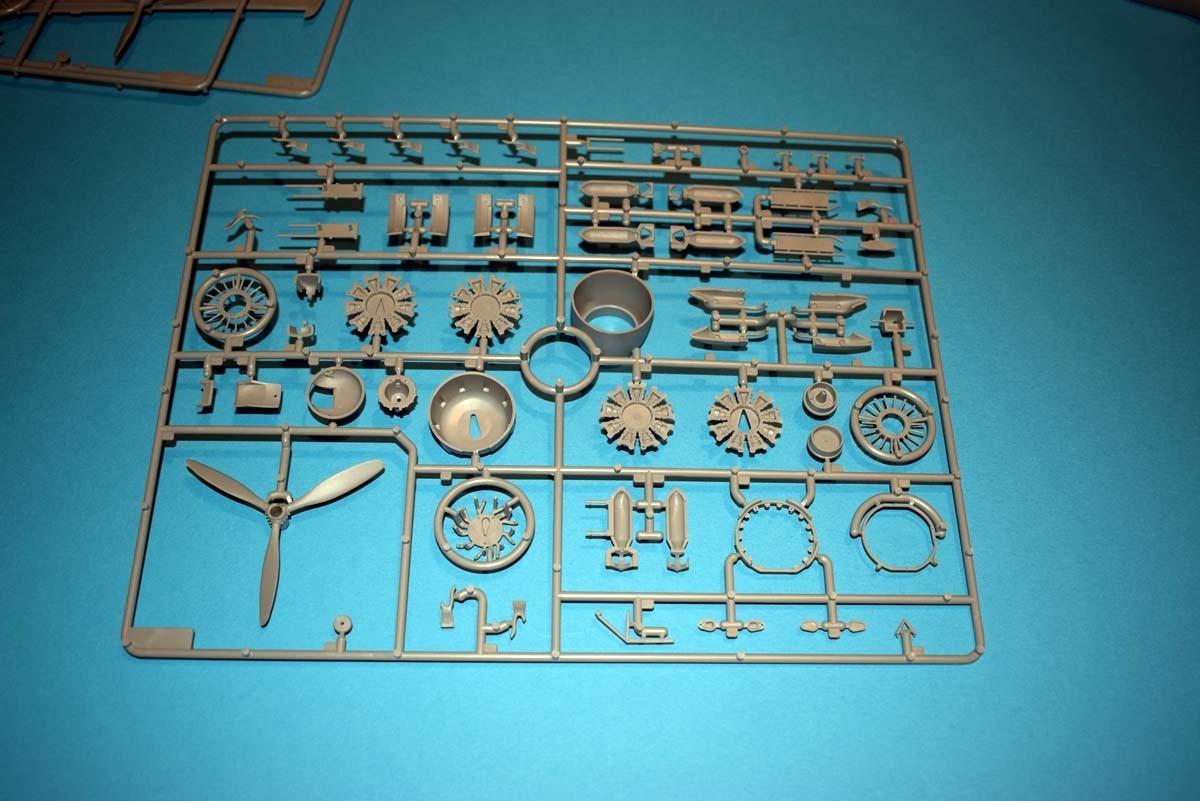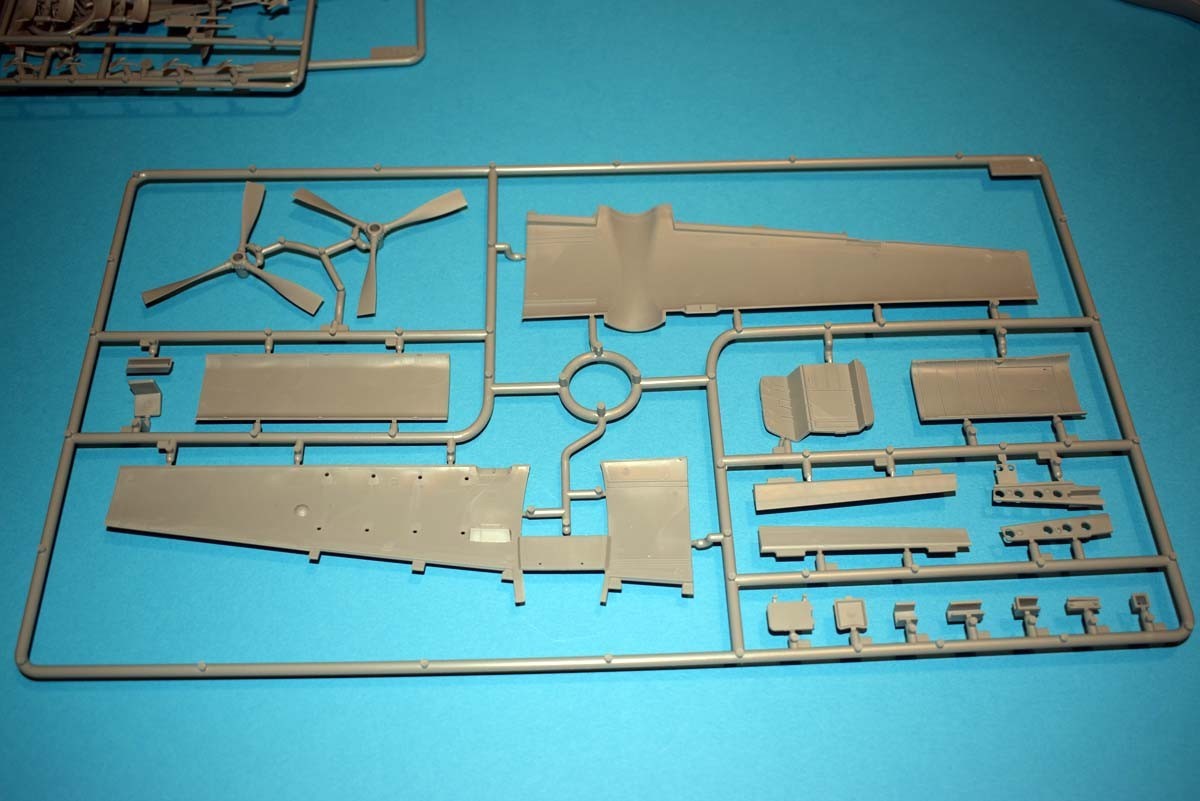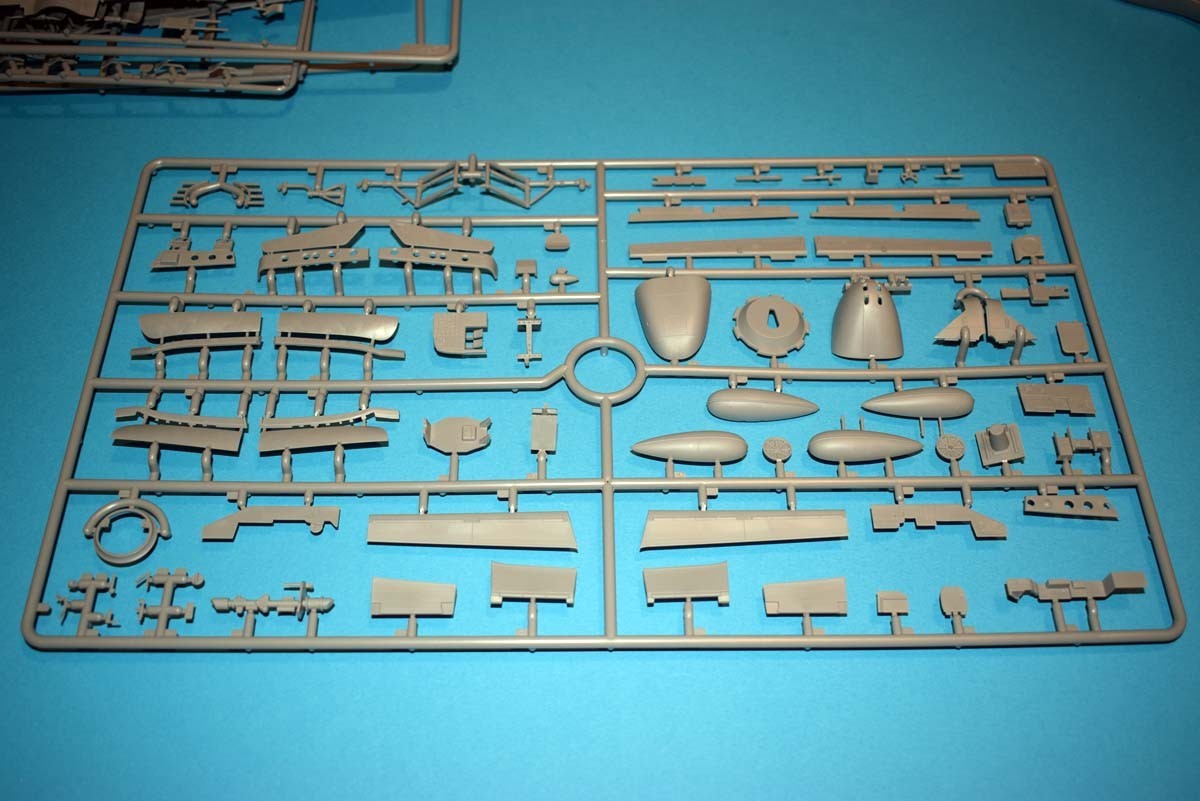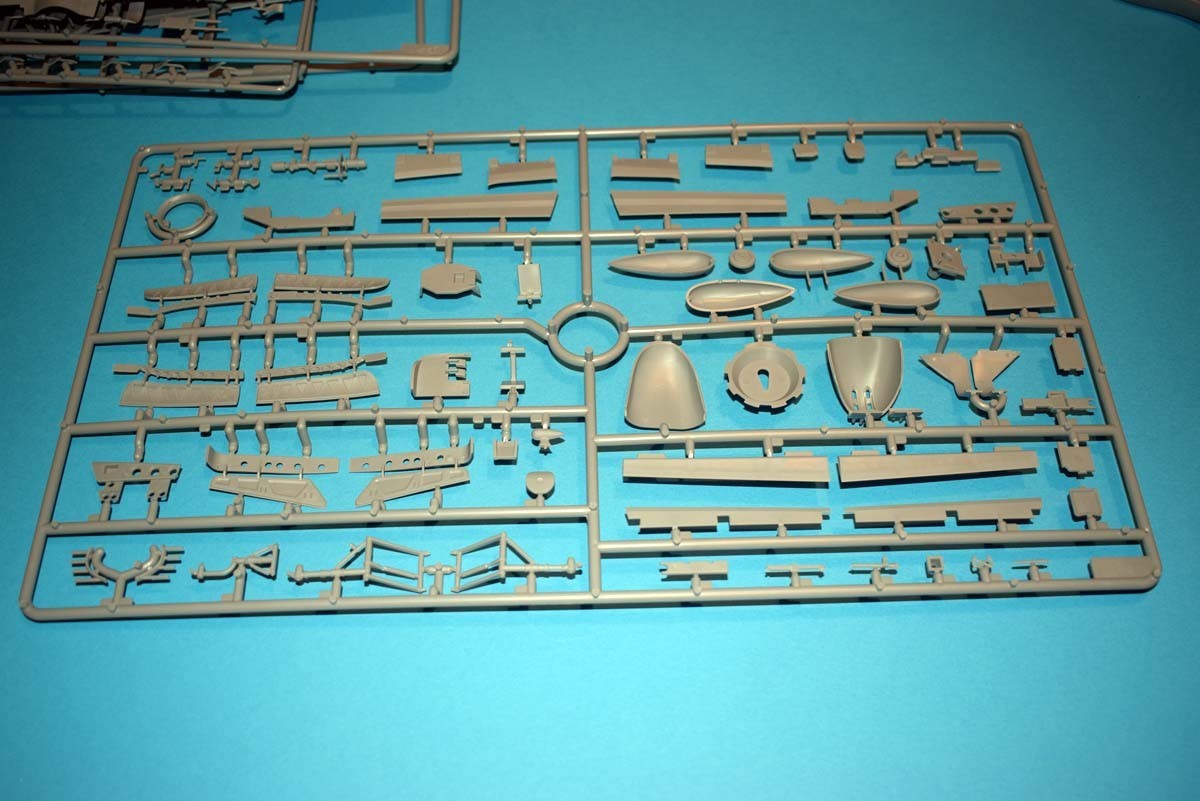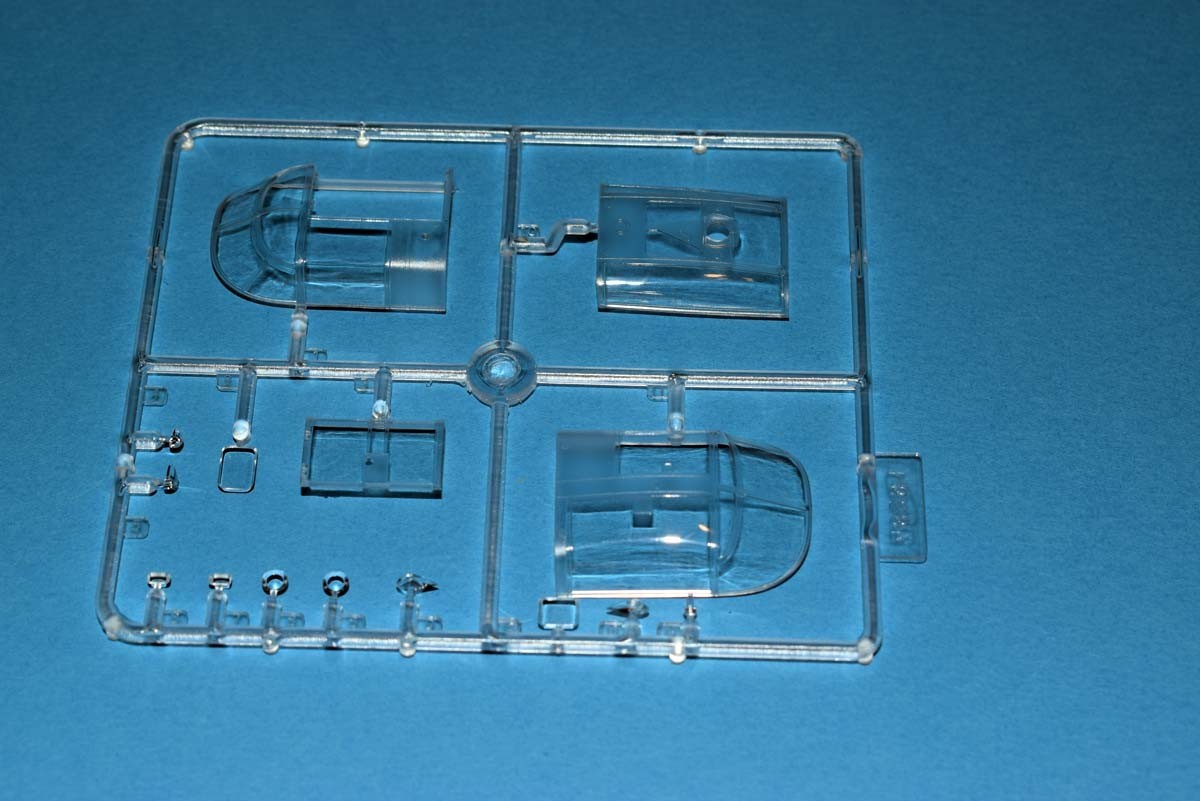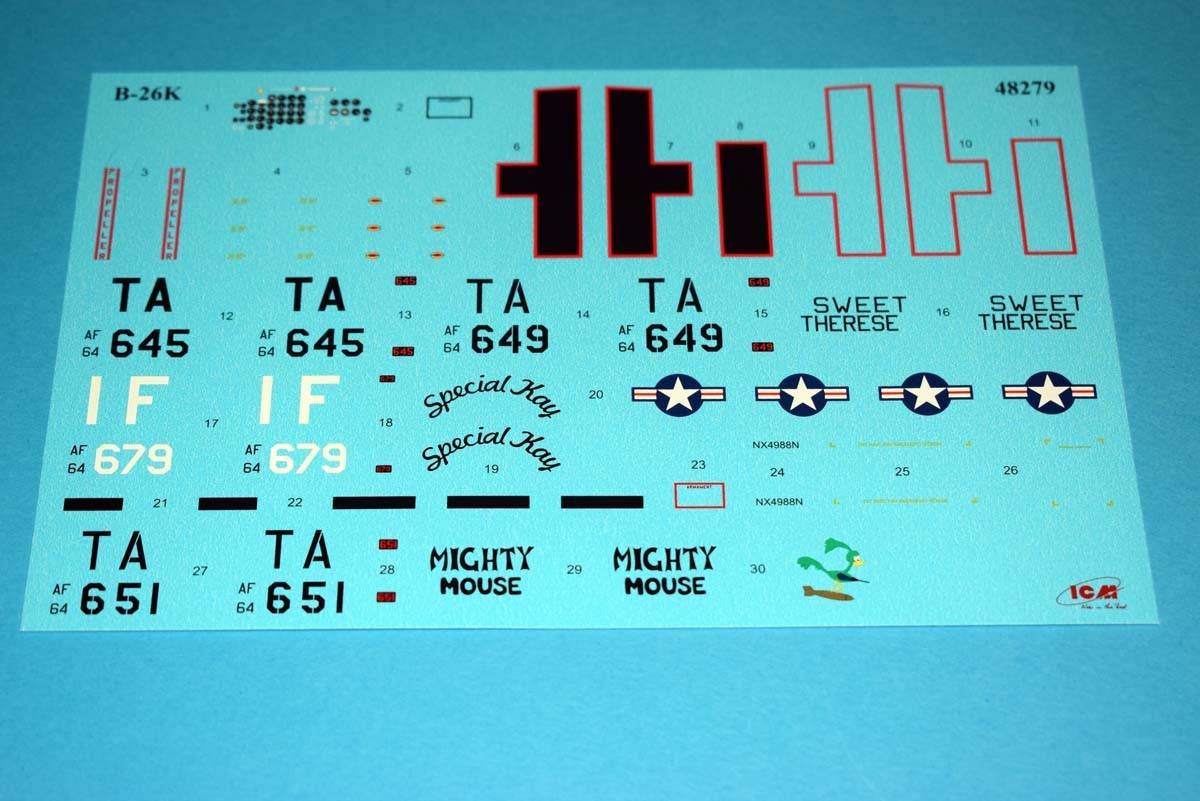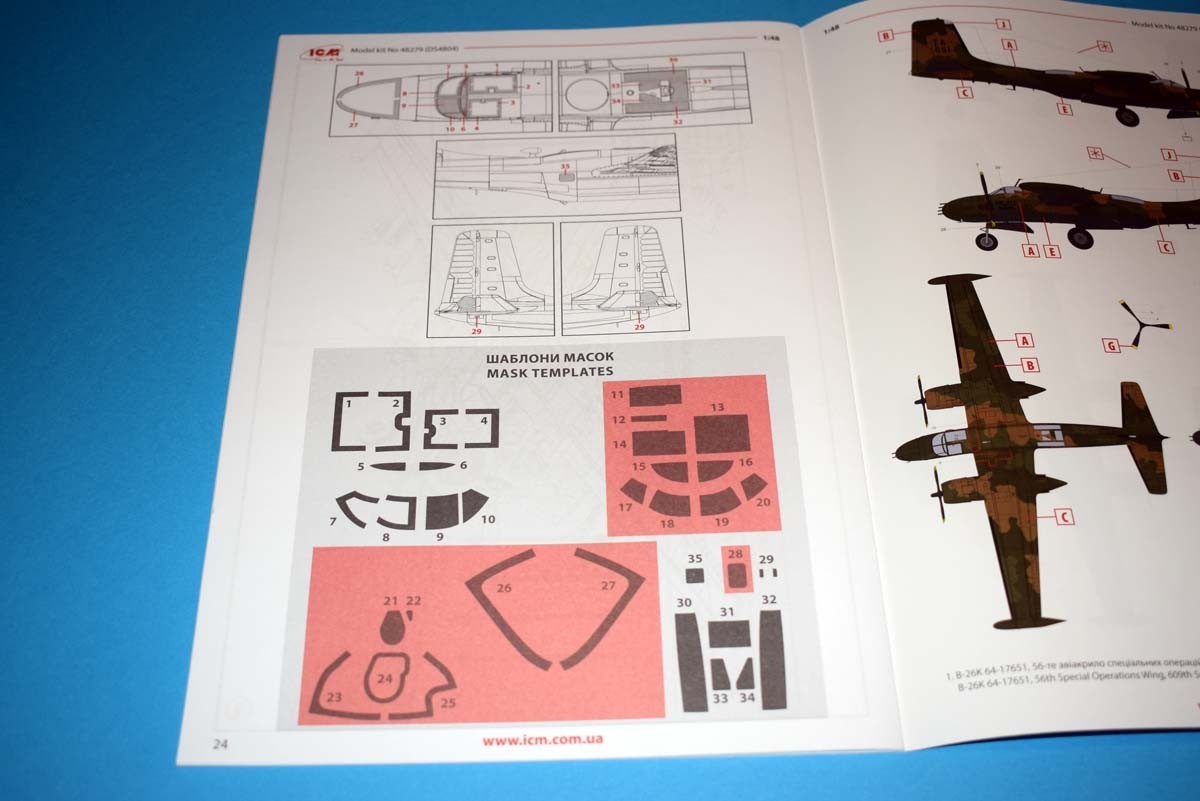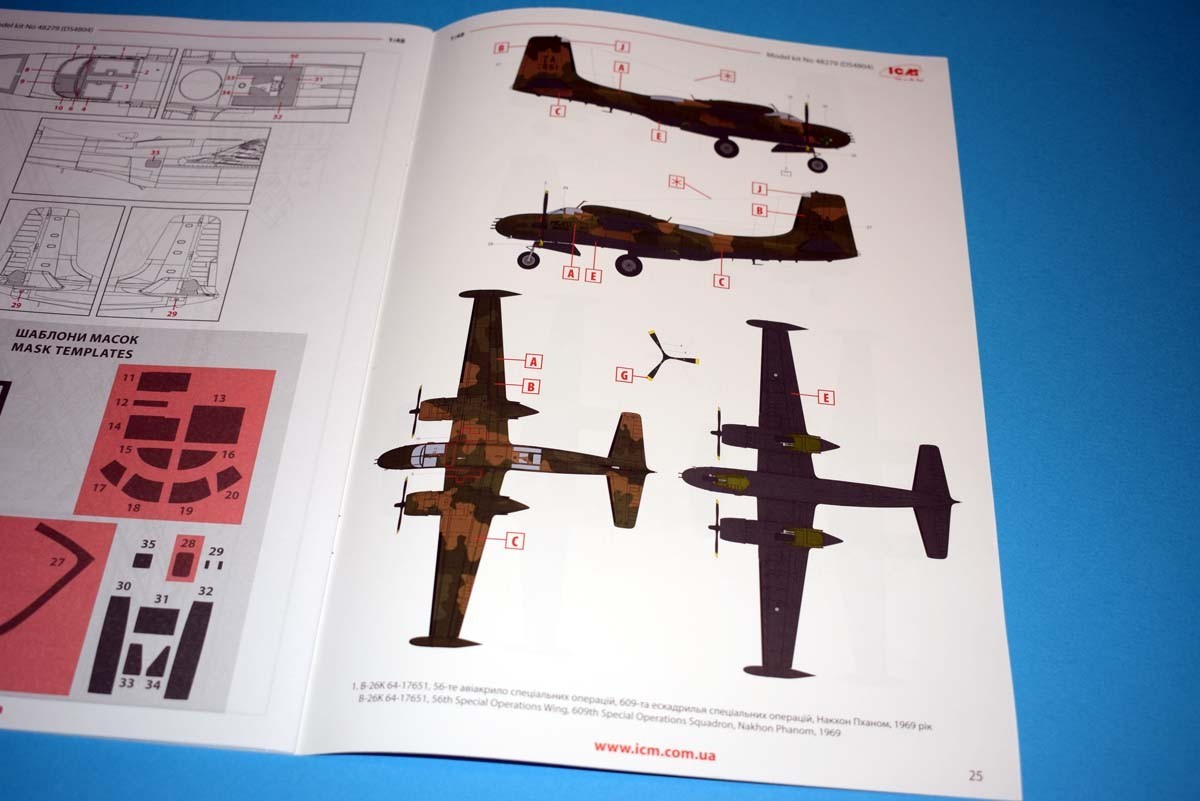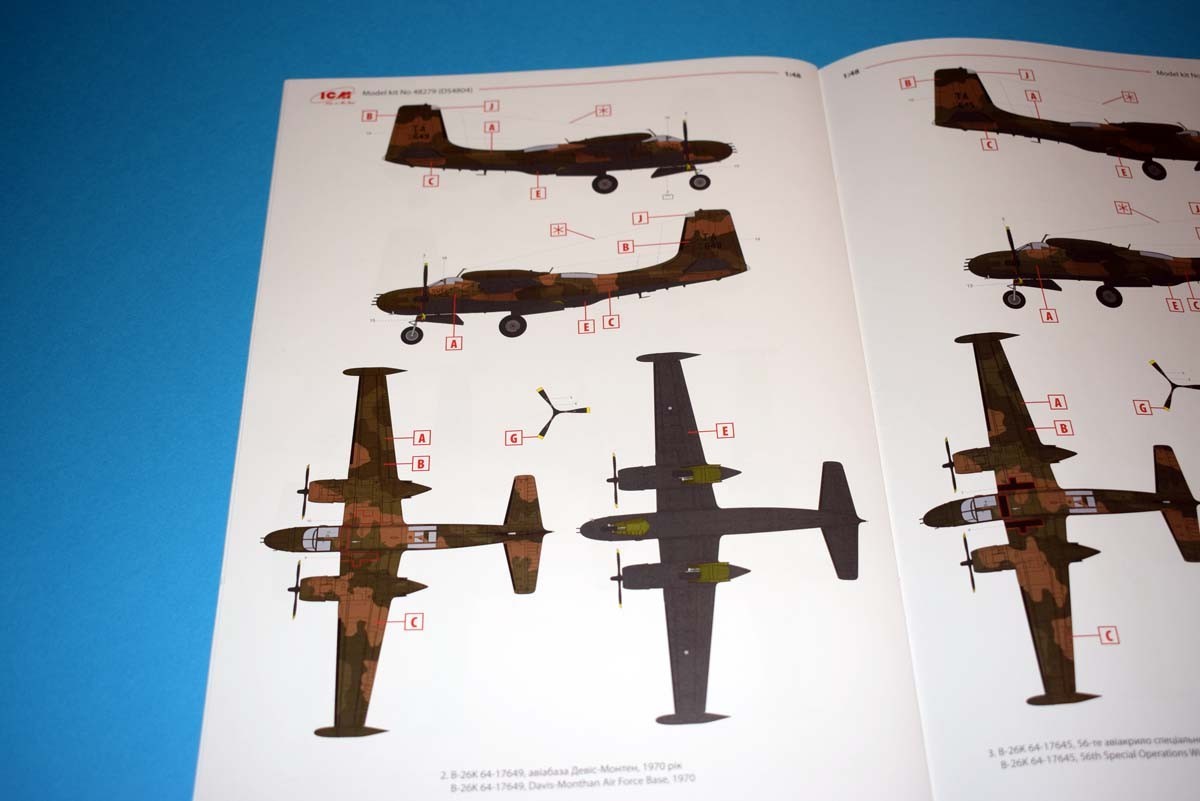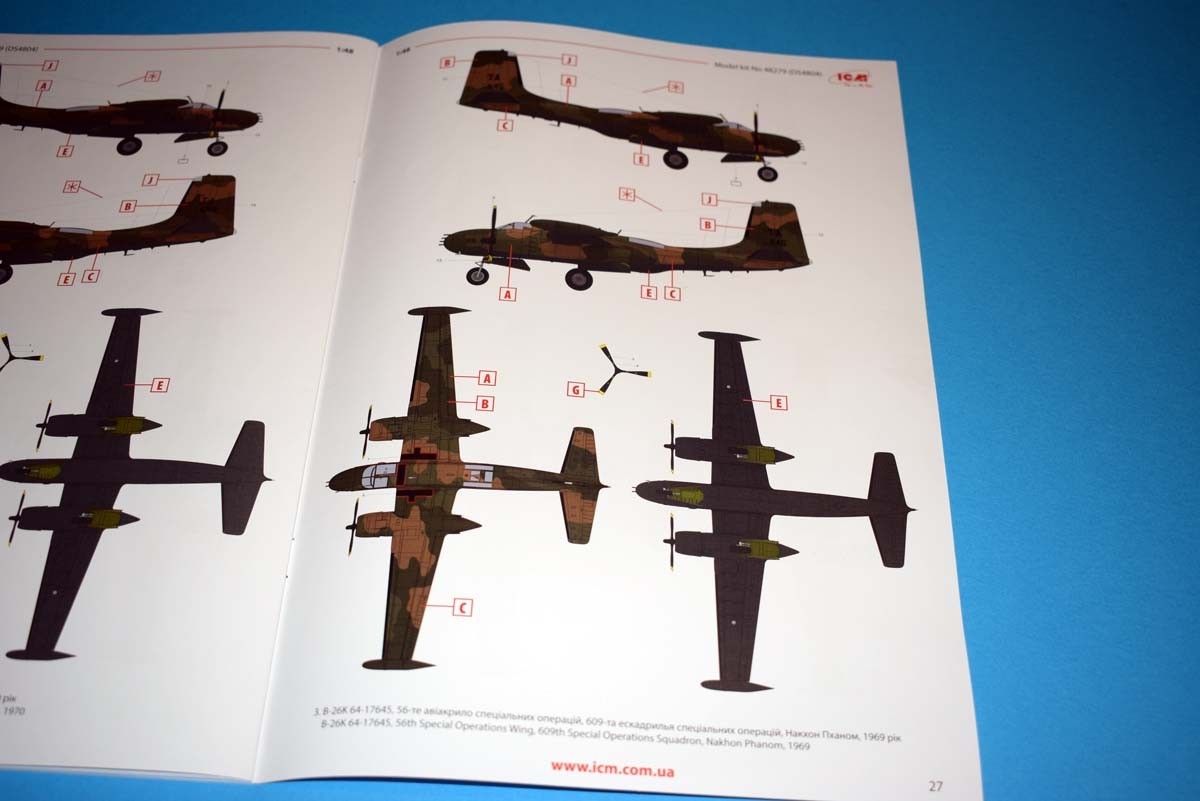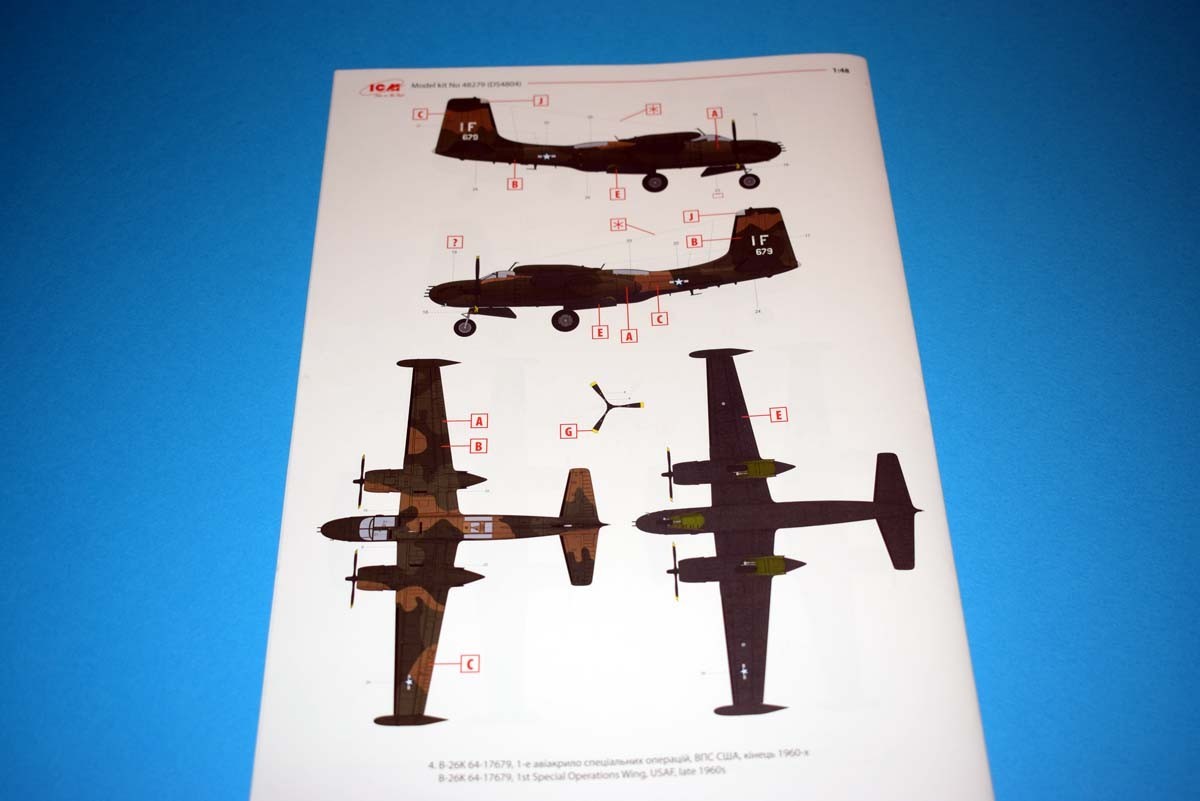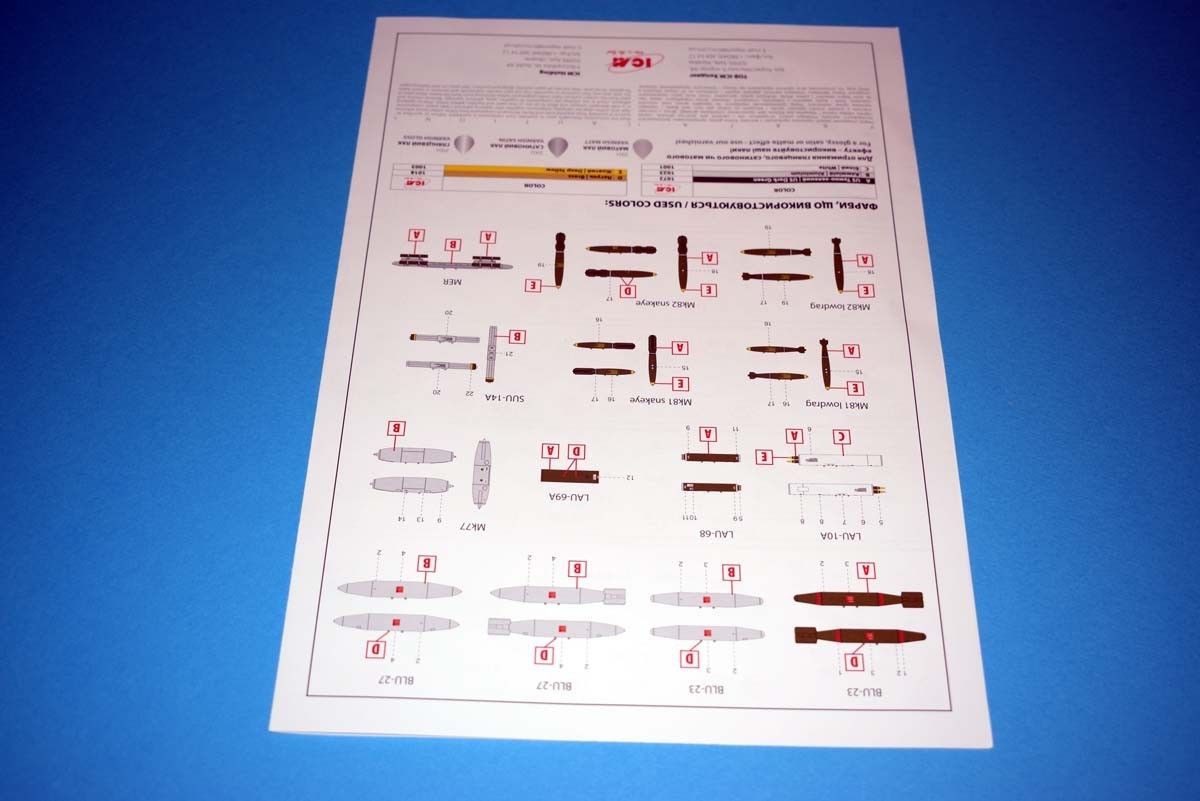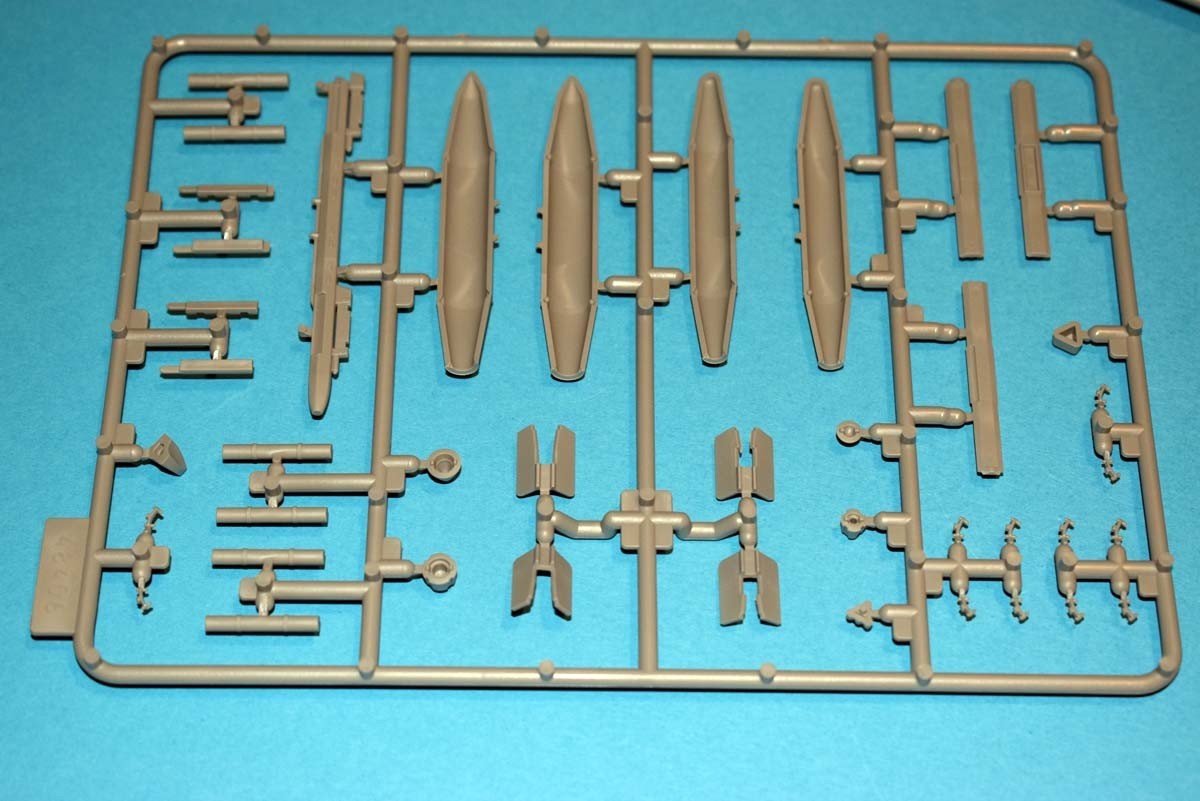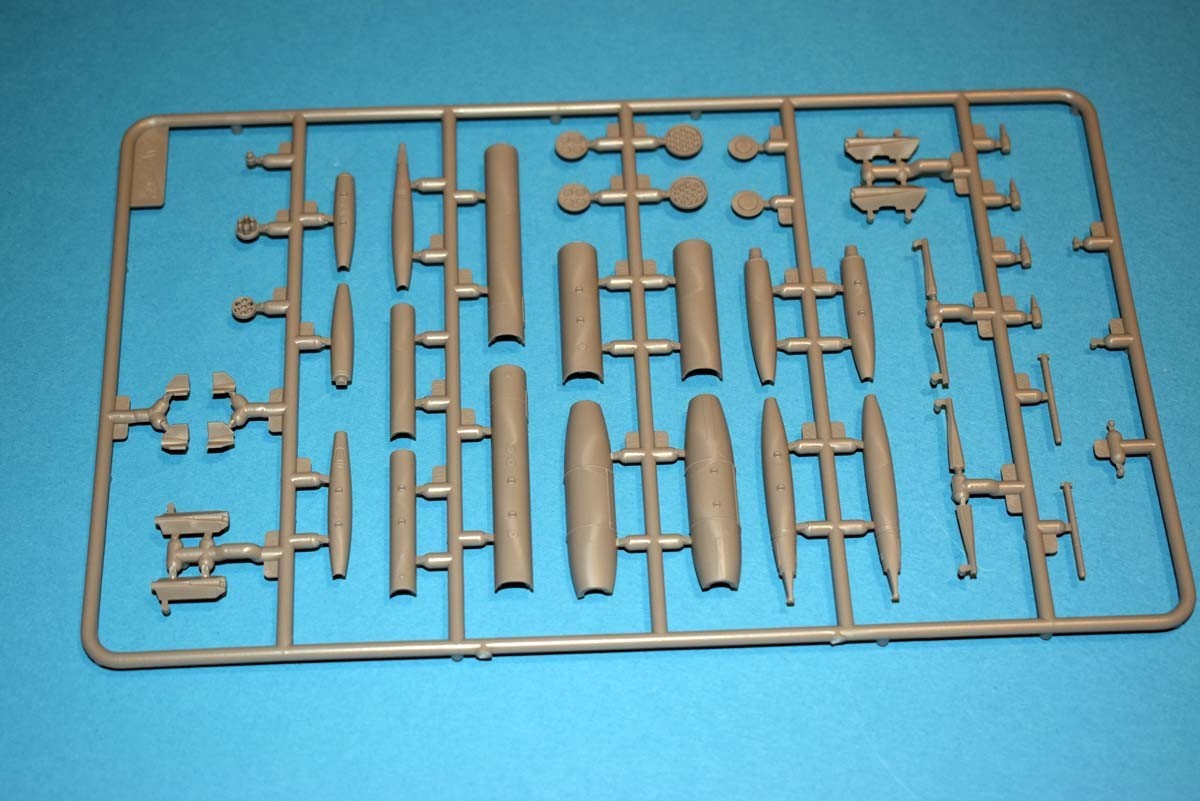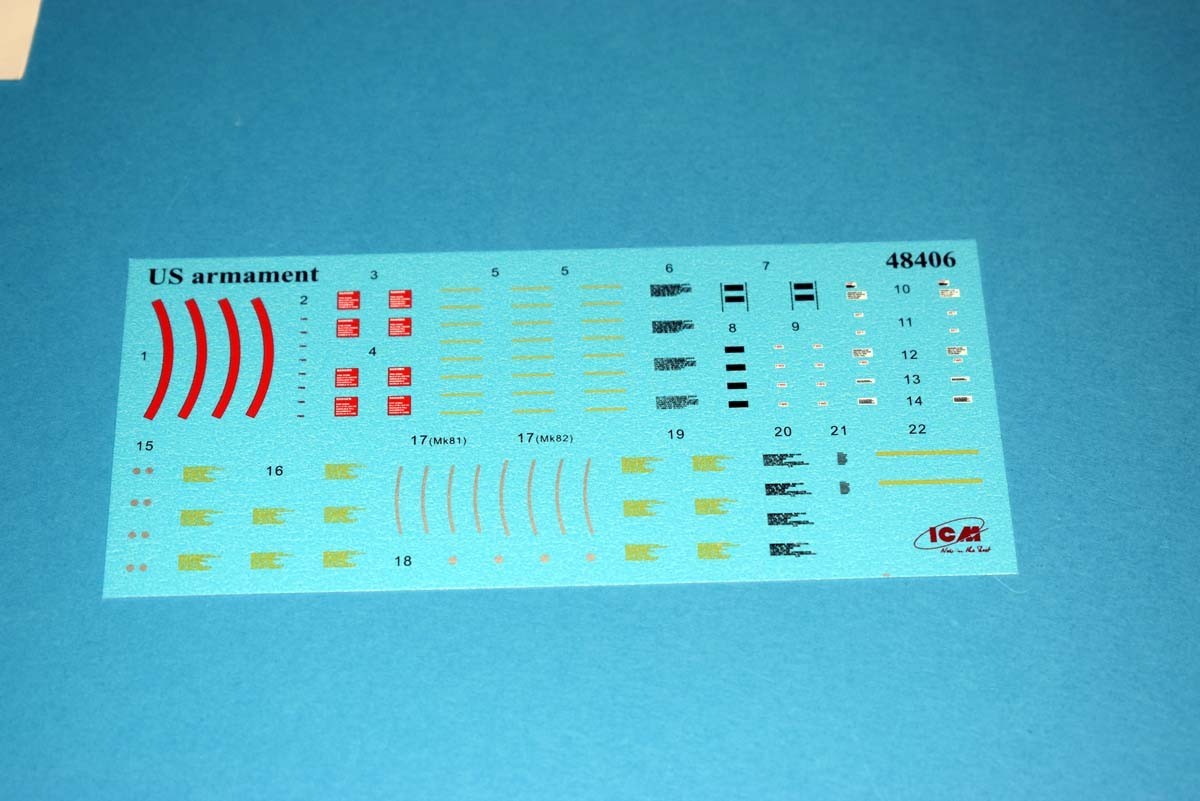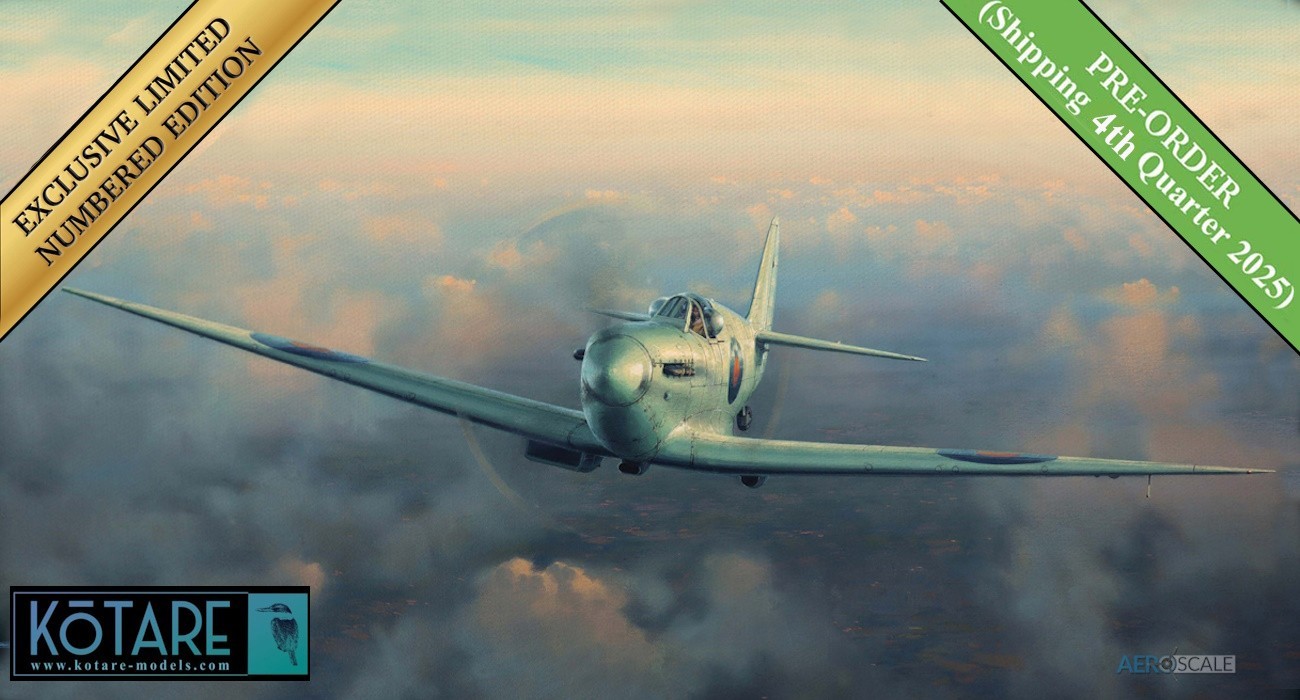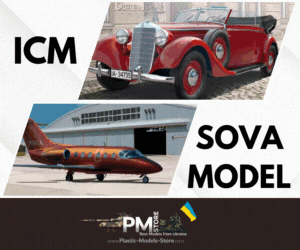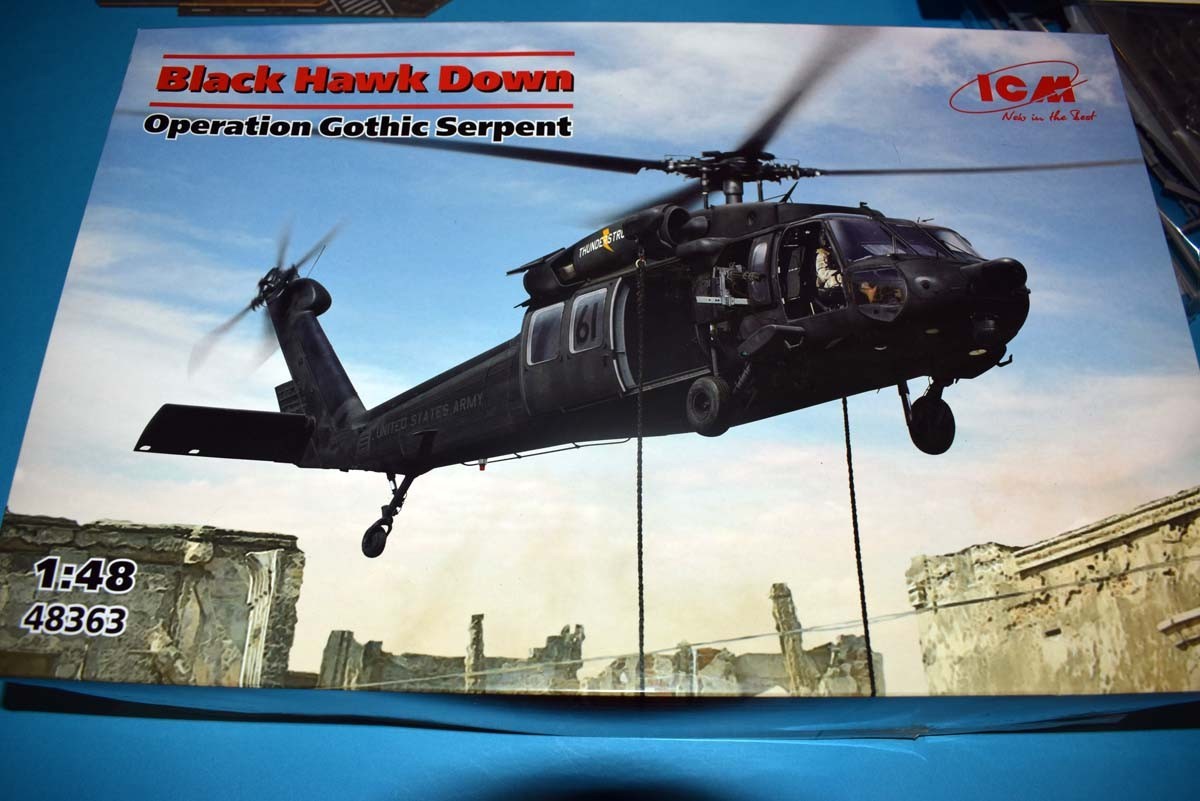
Introduction
In the spring of 1966, to counter the offensive of Ho Chi Minh’s troops, the American command decided to deploy B-26K strike aircraft in Southeast Asia. They were stationed in north-eastern Thailand, as geographically it was close to likely combat areas. They were based at the Thai Nakhon Phanom airfield. In order to stay in Thailand, B-26K Counter Invader aircraft were designated as A-26A attack aircraft, because this country did not officially allow the deployment of bombers on its territory. Included aircraft in the 609th special operations squadron. Most Counter Invader combat missions took place in the dark, the reason for this was Vietnamese air defence, which posed a serious threat to piston aircraft with a relatively low speed. Together with B-26K, in Nakhon Phanom were based and light piston aircraft O-2 Skymaster. They were also involved in special tasks, and some of them had black fuselage painting for night sorties.
Review
This offering from ICM arrives in the usual manner of a flip top cardboard box with a separate card lid showing the artwork. Upon opening the box, there are three re-sealable plastic bags containing the model parts. The instruction booklet is separate and also contains the decals. This release from ICM must be heading towards the end of Invader releases, despite there still being a few more variants they could release. There are a large number of changes that have taken place with this release, and will give you spares, such as complete wings, a large amount of under wing ordnance and even a set of props. As with all of these models in this series, you start with the fuselage interior. Changes are instantly observed by anyone who has built any of the previous releases, gone is the bomb aimer’s portion of the cockpit and a co-pilot location has been installed. An unfortunate aspect is that ICM has STILL not provided harnesses for the seats, and these really do need to be added, on a model of this scale, with such a large glazed area.
Wing supports are added via the bulk heads, separating the bomb bay from the cockpit and rear crew area. A bomb load is provided, for the interior bomb bay, but you only get one bomb per rung, when I believe there should be two. The detail on the interior of the fuselage halves is very nicely replicated, but I am not in a position to confirm its accuracy. The tail assembly is added when you close up the fuselage, and the flight control surfaces are provided as separate parts in this area. Moving to the other end and the nose of the aircraft, you are provided with 8 50cal machine guns in the nose. Alot of data you will read on the Invader will tell you there are 14 forward firing 50cals, but that is incorrect on an updated Counter Invader, and the lack of 50cals in the wings is correct. Finally in this particular area I am pleased to see ICM show that weight is needed in the nose and the amount of weight to prevent a tail sitter.
The wings of this release are all new mouldings, as the counter Invader had to have newly designed wings with improved structure inside the wings, due to two aircraft having been lost due to wings breaking off - which is not really surprising when you think that these air craft were heading to 30 years old. The wing tips are removed and external fuel tanks added, similar to those seen on the F104 Star Fighter. All of the flight controls at the rear of the wing are separate, and so with a little bit of work could be displayed as you wish. On the underside of the wing there are four obvious locations for the hard points. The wings are added to the fuselage, prior to the engine nacelles and the under carriage being added, and this reduced weight will make wing orientation easier to get right. The engine nacelles themselves are the same as previous versions, with just a new intake fitted to the top of the cowling, which brought in the extra air required for the newly improved engines in this release, having gone from a Pratt and Whitney R2000 engine to the Pratt and Whitney R2800 engine.
ICM have supplied engines for both sides on this release, and have added some alterations to make it more accurate for the R2800 engine. Which will meet the needs of many but there is a lot more that could be added to make this area truly appealing. The propellers are the correct wide paddle, with the cropped tip seen on the counter Invader. The under carriage doors are added to the model along time before getting anywhere near to adding the under carriage, and I praise ICM for providing very secure application of these parts. The under carriage struts both in the nose and the wings, appear to be very accurate with the exception of missing tubing that would replicate the brake hoses. One thing the modeller may be interested to know is that the Invader’s biggest weakness was the under carriage struts, as they had a nasty habit of collapsing. The panels that fill in the fuselage holes and location, but I personally don’t like the idea of drilling the main canopy.
ICM has provided a good selection of external ordnance, should you wish to add it. The Invaders used everything from iron bombs, napalm, rockets and cluster bombs, that were used on movements along the Ho Chi Minh trail in order to help prevent troop build ups. In addition to the iron bombs located in the internal bomb bay, you are supplied with BLU-23, BLU-27,LAU-10A,LAU-68, LAU-69A, Mk 77, Mk 81 Low drag, Mk 81 Snake eye, SUU-14A, Mk 82 Low drag, Mk 82 Snake eye. You are also provided multiple ejection racks, used in conjunction with the bomb load. The ordnance, has its own decal sheet, and instruction booklet and you get at least two of every item.
Something that ICM does very well, surprisingly and unusually is figures in 1/48th scale. Here we have five figures, two of whom are pilots, two are ground crew and one is an Officer. All of the figures have exceptional facial features for this scale, and for anybody with the skills for bringing these details out can expect a lot of approval. The two pilots are both in one piece flying coveralls, with webbing over the top. This harnessing is for basically attaching the pilots to the chair. The helmet in one case is provided in two halves and the painting style described in the instructions is more US Navy than Air force in my opinion. The officer figure is also dressed more appropriately for a Naval officer, rather than the greens I would expect to see on an Air force NCO. The best match would probably be the colour of the shirts worn by US Marine Corps officers. The two ground crew members are in T-shirts and light fatigue trousers, one has a raised hand the other two raised hands, and so you will have to position them to suitably indicate what they are up to.
O-2A Skymaster
With this model being of an aerial spotter aircraft, there is a good quantity of glazing to be added to the model. A fair amount of which is added early on in the build, so my first word of caution is to take a lot of care with the glue. The interior of the cockpit has been provided with a very nice radio cluster for the rear wall that with some careful painting and detailing should prove visually appealing. Careful checking of images on-line reveals the radio set up at the rear of these birds varied quite a bit, and so to say that something is accurate or inaccurate is to my mind not really possible. The cockpit floor has some nice detail present that would seem to match online reference. The instrument panel has been provided with decals for the dials, but with careful application they should look the part, and again a check of on line reference indicates that the instrument set up is good.
Moving to the seats of the aircraft, we find that detail wise they are very good, however no aspect of the harness is provided, and this causes some issues for the modeller. This harness arrangement would appear to be a four point harness, but is complicated by the fact that the shoulder straps hang down from the roof of the cockpit and so may be difficult to replicate. I have taken a look online and it would appear at this time that no after market manufacturer currently caters for this aspect of the model. The side walls of the fuselage would appear to be cloth covered, with some details present, the details have been replicated by ICM but the cloth texture has not been well done or may not have been replicated at all. ICM has provided the top portion of the front engine, but I honestly do not believe that any aspect of the model can be seen when finished.
The front wheel will need to be added before the cockpit is closed up and so finding a location to add the 10g to prevent a tail sitter, may prove to be testing. One final inclusion to the interior of the model which is a nice touch, are two M16 rifles that I suspect every crew member hoped they would never need to use. The push portion of the propulsion of the aircraft has been nicely tackled in what you can see and so I am pleased.
Moving to the main wing, I have found something that is quite unusual you are directed to apply the upper portion of the wing (which is a single piece), place the air intake on top of that along with all the antennas. You then assemble and apply the twin boomed tails to the model before the application of the lower wing surfaces. If you intend to display this model with external stores you need to drill out some holes, and I am pleased to see that ICM have clearly identified where the holes need to be drilled and the size of the drill bit required.
The flight controls and all the tail surfaces, and at the ends of the main wing have been provided as separate parts and so can be orientated as desired. The rear under carriage assembly is very robust, and I approve of its design and application. The wing spars have been well tackled and look the part. Looking at all the external aspects of the model, I am very impressed with how fine the recessed panel lines are. My only concern is that they are so fine; I am concerned that they could be easily obscured when painting. Moving on to the external stores, ICM have provided two options, these consist of four multiple unguided air to ground rocket pods, or two air to ground rocket pods, plus two gun pods. I am pleased to see that ICM have again supplied masks for all the clear glazed parts of the model, this is becoming more common in ICM kit offerings, and I am really pleased to see its inclusion. ICM has provided four finishing options for the model which have been provided in full colour by AK Interactive, but no details have been provided on what the finishes represent, which I find disappointing.
Something that ICM does very well, surprisingly and unusually is figures in 1/48th scale. Here we have five figures, two of whom are pilots, two are ground crew and one is an Officer. All of the figures have exceptional facial features for this scale, and for anybody with the skills for bringing these details out can expect a lot of approval. The two pilots are both in one piece flying coveralls, with webbing over the top. This harnessing is for basically attaching the pilots to the chair. The helmet in one case is provided in two halves and the painting style described in the instructions is more US Navy than Air force in my opinion. The officer figure is also dressed more appropriately for a Naval officer, rather than the greens I would expect to see on an Air force NCO. The best match would probably be the colour of the shirts worn by US Marine Corps officers. The two ground crew members are in T-shirts and light fatigue trousers, one has a raised hand the other two raised hands, and so you will have to position them to suitably indicate what they are up to.
Finishing Options
B-26K 64-17651, 56th Special Operations Wing, 609th Special Operations Squadron, Nakhon Phanom, 1969
B-26K 64-17649, Davis, Monthan Air Force Base, 1970
B-26K 64-17645, 56th Special Operations Wing, 609th Special Operations Squadron, Nakhon Phanom, 1969
B-26K 64-17679, 1st Special Operations Wing, USAF, Late 1960’s
No finish option details are provided for the SkyMaster but four painting guides are provided minus the details on what they represent.
Conclusion
This is another nice collection of items released by ICM individually in the past and now brought together as a one off purchase. The models in this offering are overall pleasing but really need a little TLC to lift them to the high standard many expect in the form of harness detail at the very least. With that out of the way I like that ICM has supplied plans for creating your own masks which are quite expensive for what they are. Moulding quality is good from what I can see and so I do not expect too many issues in your build. With a price in the £70 range it does offer a lot of plastic for the money and no major issues too overcome and only further improvements needing you to make a decision.

